Image above: A windy day at Mummichog Pond. For details, see October 13, 2020 (below).
Series No.2, Zoe’s daily Facebook posts from Sable Island.
Posted on Facebook, November 7, 2020
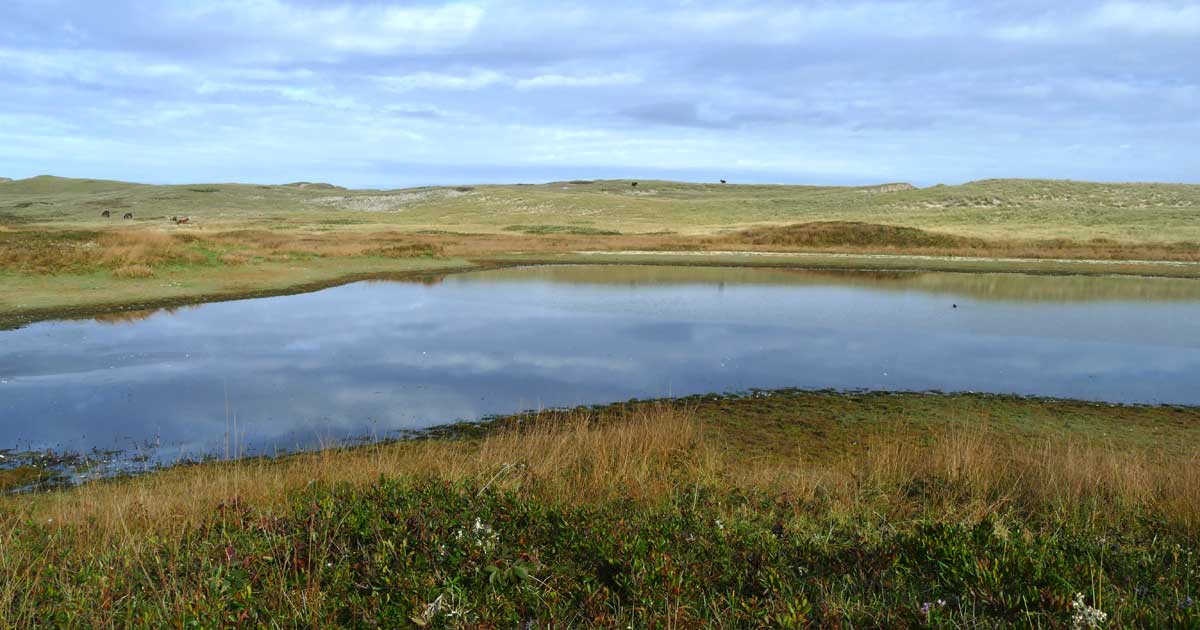
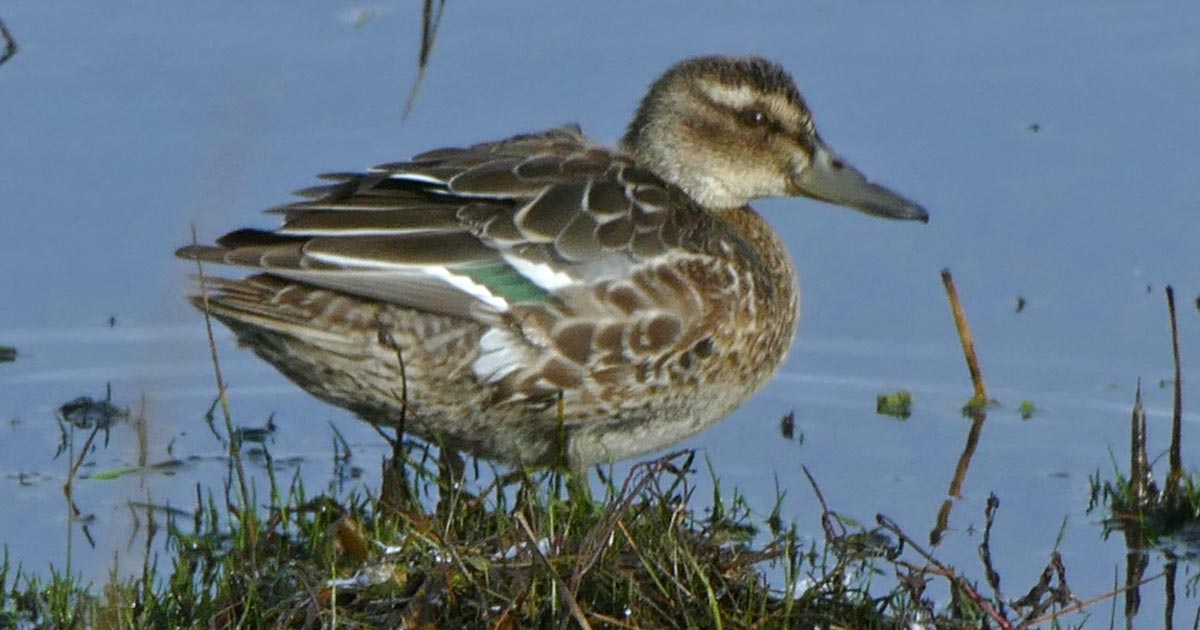 On October 21, during a calm morning at Gull Pond, Sable Island, while horses were grazing in the distance, there was a solitary duck on the water (a small dark spot near the right side of the photo). It was a Garganey, a species of duck from Europe and Asia. This species is highly migratory and individuals sometimes turn up far beyond their normal range. There have been scattered sightings across North America, including some in Nova Scotia. The Garganey at Gull Pond stopped at the edge of the water for a while, providing a good view of its distinctive wing markings. The grey-blue colour of the forewing, visible when the duck briefly extended a wing, suggests that this is a male in eclipse plumage.
On October 21, during a calm morning at Gull Pond, Sable Island, while horses were grazing in the distance, there was a solitary duck on the water (a small dark spot near the right side of the photo). It was a Garganey, a species of duck from Europe and Asia. This species is highly migratory and individuals sometimes turn up far beyond their normal range. There have been scattered sightings across North America, including some in Nova Scotia. The Garganey at Gull Pond stopped at the edge of the water for a while, providing a good view of its distinctive wing markings. The grey-blue colour of the forewing, visible when the duck briefly extended a wing, suggests that this is a male in eclipse plumage.
Posted on Facebook, November 6, 2020
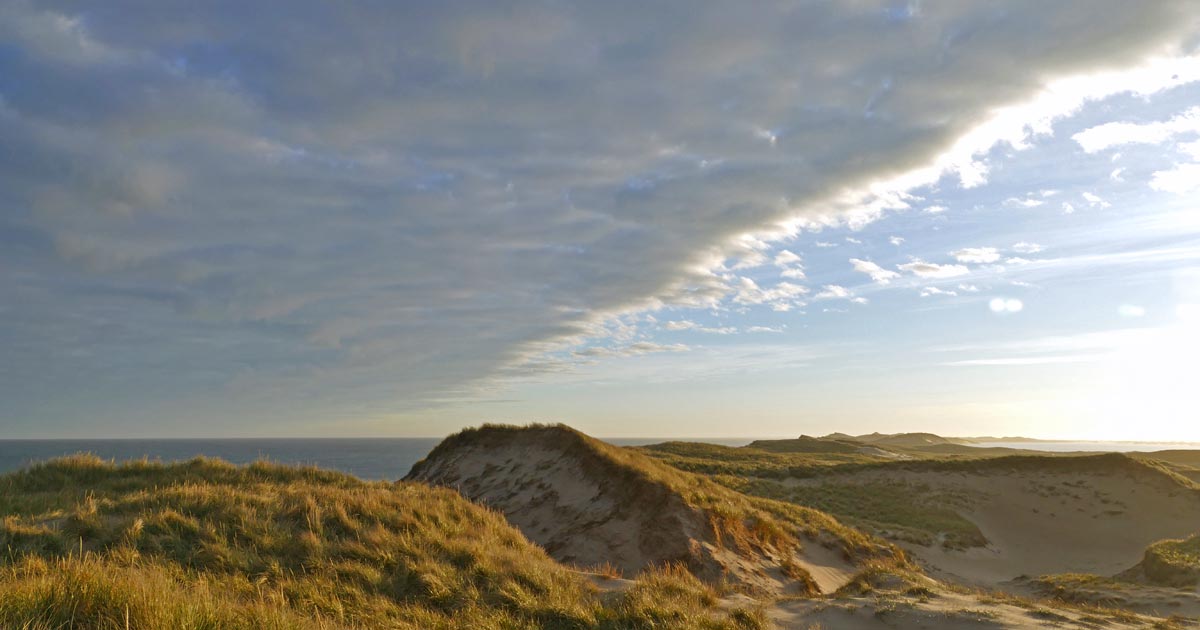
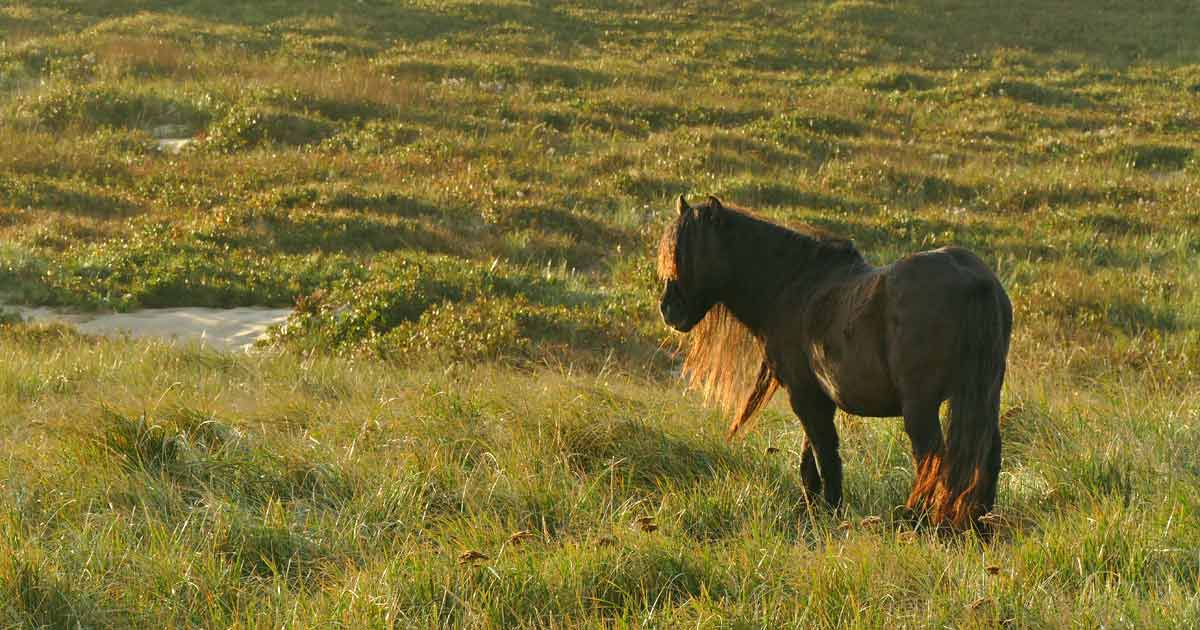 This Sable Island day began with the sunrise gleaming past the edge of the cloud. A band stallion stands resting in the warmth in a sheltered meadow of grass and shrubs. The temperature was about 12°C for most of the morning (getting up to 14.8°C in the afternoon) and the southerly wind peaked at 21 knots (39 km/h). Within a few hours, the cloud had moved across the sky and the rest of the day was in gloomy overcast, but still pleasantly mild in the breeze.
This Sable Island day began with the sunrise gleaming past the edge of the cloud. A band stallion stands resting in the warmth in a sheltered meadow of grass and shrubs. The temperature was about 12°C for most of the morning (getting up to 14.8°C in the afternoon) and the southerly wind peaked at 21 knots (39 km/h). Within a few hours, the cloud had moved across the sky and the rest of the day was in gloomy overcast, but still pleasantly mild in the breeze.
Posted on Facebook, November 5, 2020
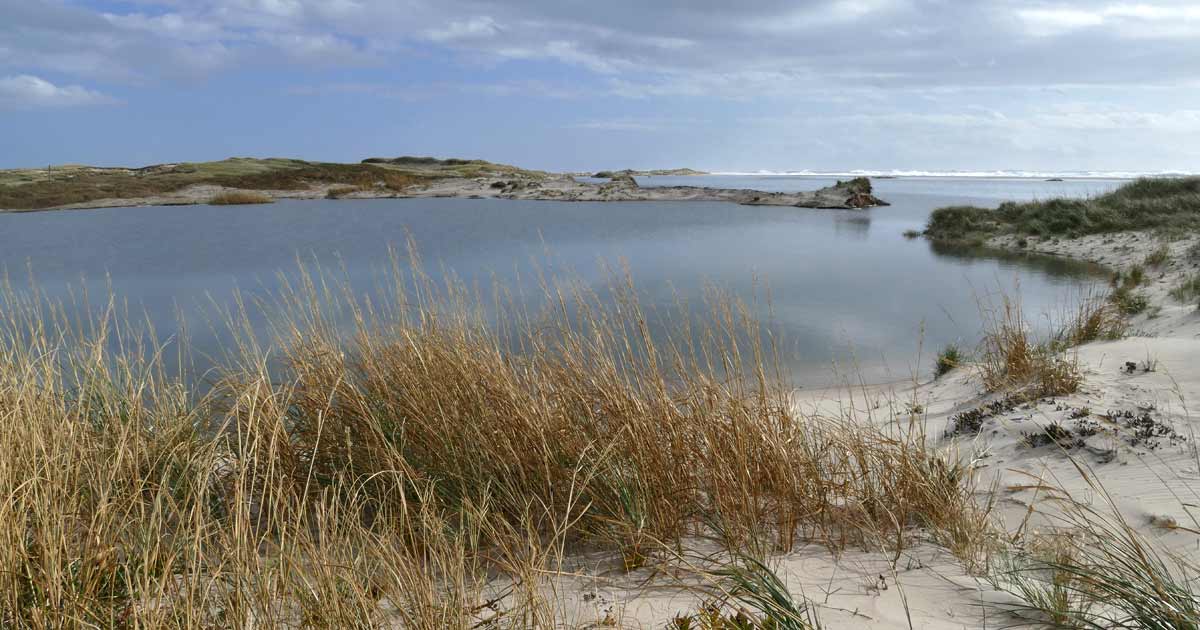
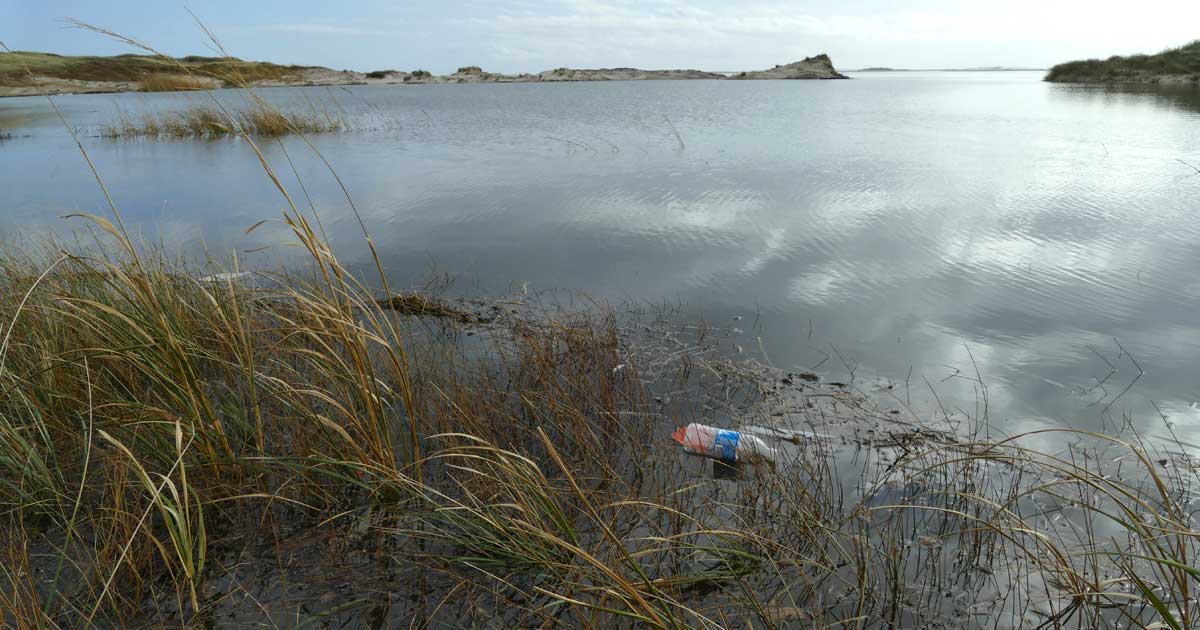 Wave height in the Sable Island area has dropped to below 2 metres, so there’s less seawater washing over the berm. But flat areas of south beach are still flooded. Where the freshwater Lily Pond North used to be, there is a saltwater pool. Whenever the beach floods, water flows into the pool through a break in what’s left of the dune line that used to protect the pond. Along the pool’s edge is an accumulation of debris, including plastics, that is carried in with the floodwater from the ocean.
Wave height in the Sable Island area has dropped to below 2 metres, so there’s less seawater washing over the berm. But flat areas of south beach are still flooded. Where the freshwater Lily Pond North used to be, there is a saltwater pool. Whenever the beach floods, water flows into the pool through a break in what’s left of the dune line that used to protect the pond. Along the pool’s edge is an accumulation of debris, including plastics, that is carried in with the floodwater from the ocean.
Posted on Facebook, November 4, 2020
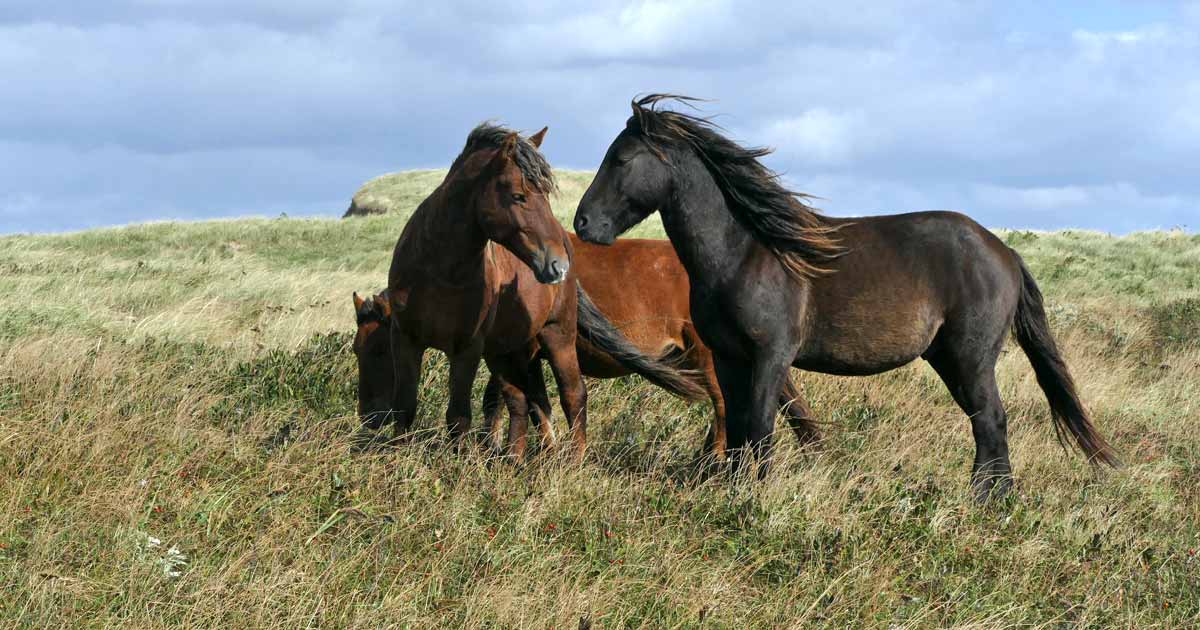
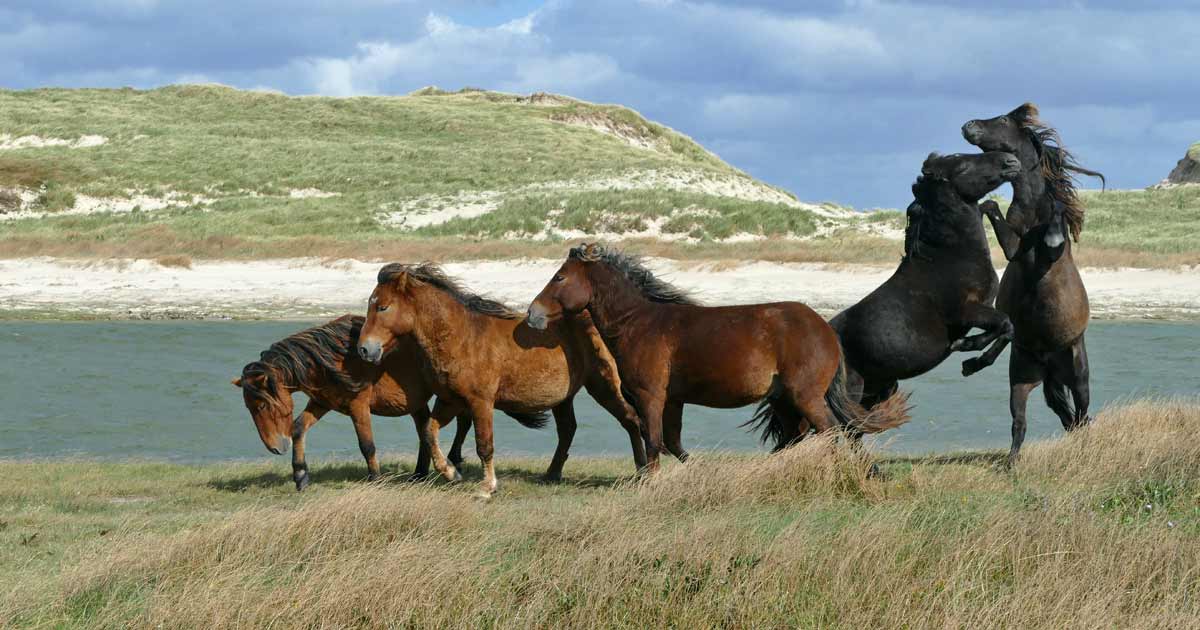 Sable Island horses – such as this group of males, a bachelor band – are fascinating to observe as they engage in a wide range of social behaviours, both within the group and between groups. Most of these activities continue year-round and are as likely to be seen during a snowfall as on a breezy fall day. After the past few days of high winds, this afternoon the wind diminished. The sky was mostly overcast with some bursts of sunshine, and it was chillier, being about 3 to 4°C, with some early morning snow pellets.
Sable Island horses – such as this group of males, a bachelor band – are fascinating to observe as they engage in a wide range of social behaviours, both within the group and between groups. Most of these activities continue year-round and are as likely to be seen during a snowfall as on a breezy fall day. After the past few days of high winds, this afternoon the wind diminished. The sky was mostly overcast with some bursts of sunshine, and it was chillier, being about 3 to 4°C, with some early morning snow pellets.
Posted on Facebook, November 3, 2020
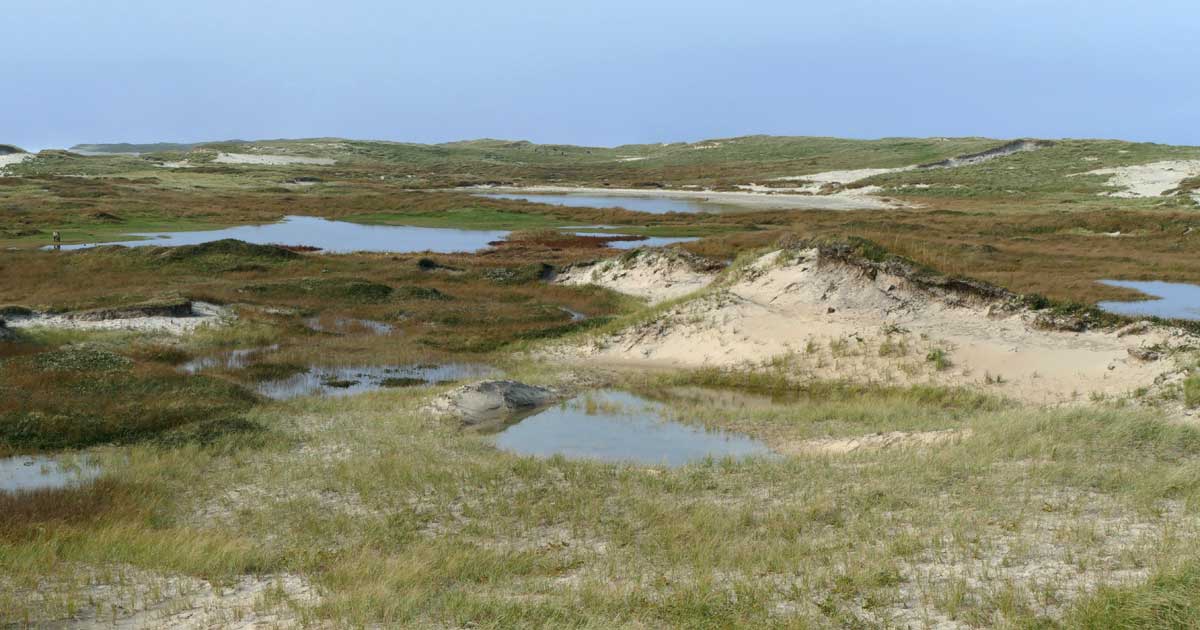
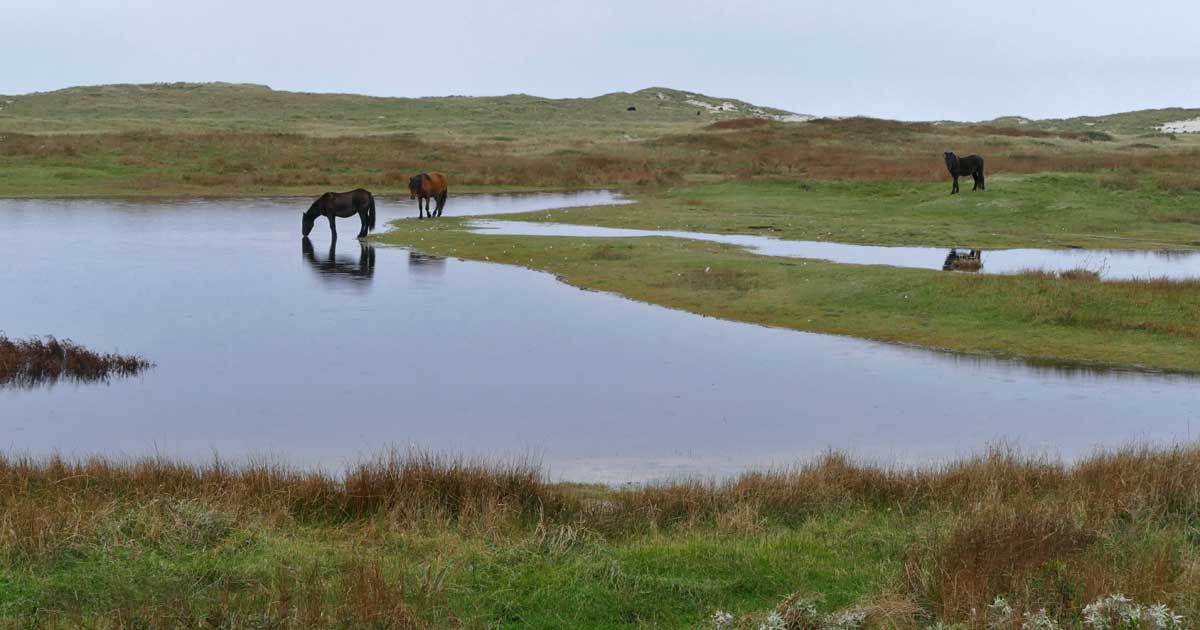 The freshwater ponds near West Light. After the heavy rain of yesterday, Sable Island’s ponds were brimming, and there were temporary pools of clear water in hollows between the dunes. By afternoon, the wind had dropped to about 5 knots (9 km/h) and there were a few hours of sunshine before rain began again. But with such a light breeze, it was a gentle rainfall that felt mild even though the temperature was only 6 to 8°C for most of the day.
The freshwater ponds near West Light. After the heavy rain of yesterday, Sable Island’s ponds were brimming, and there were temporary pools of clear water in hollows between the dunes. By afternoon, the wind had dropped to about 5 knots (9 km/h) and there were a few hours of sunshine before rain began again. But with such a light breeze, it was a gentle rainfall that felt mild even though the temperature was only 6 to 8°C for most of the day.
Posted on Facebook, November 2, 2020
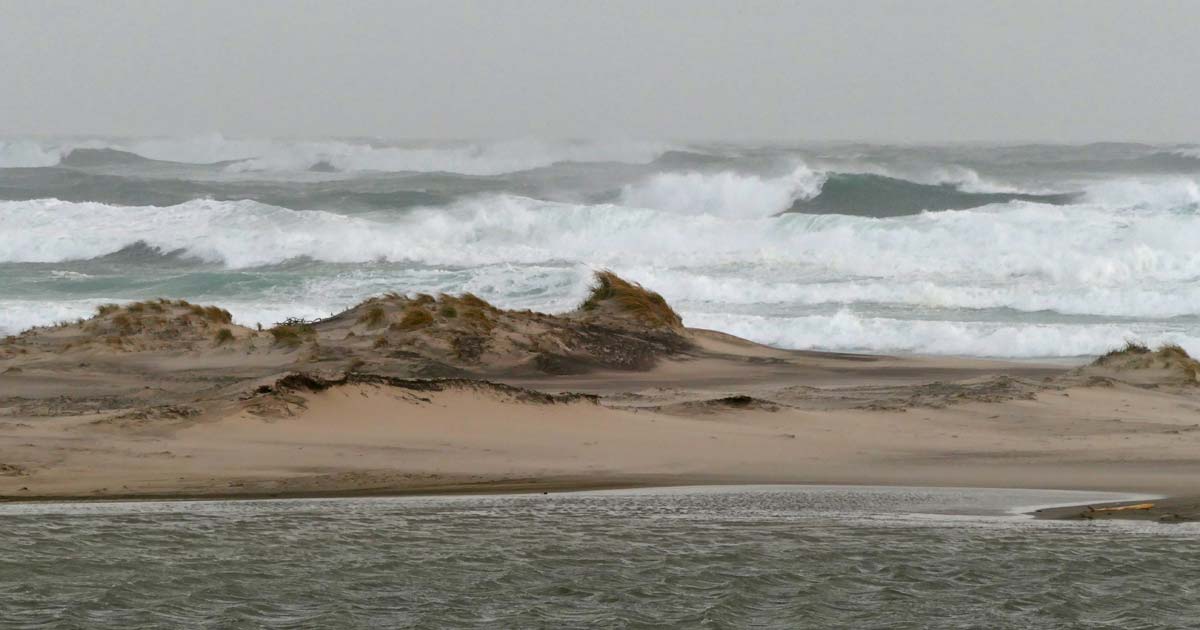 A day of wild weather on Sable Island. The maximum temperature was 17.9°C (five degrees warmer than yesterday’s high). The wind was southeast becoming southwest later in the day, peaking at 51 knots (94 km/h), and driving the heavy rainfall (total 28 mm) sideways across the landscape. This afternoon, wave height in the Sable area was 5.5 m (18 ft). This combined with the strong southerly wind produced huge waves, and some washover, along the south side of the island.
A day of wild weather on Sable Island. The maximum temperature was 17.9°C (five degrees warmer than yesterday’s high). The wind was southeast becoming southwest later in the day, peaking at 51 knots (94 km/h), and driving the heavy rainfall (total 28 mm) sideways across the landscape. This afternoon, wave height in the Sable area was 5.5 m (18 ft). This combined with the strong southerly wind produced huge waves, and some washover, along the south side of the island.
Posted on Facebook, November 1, 2020
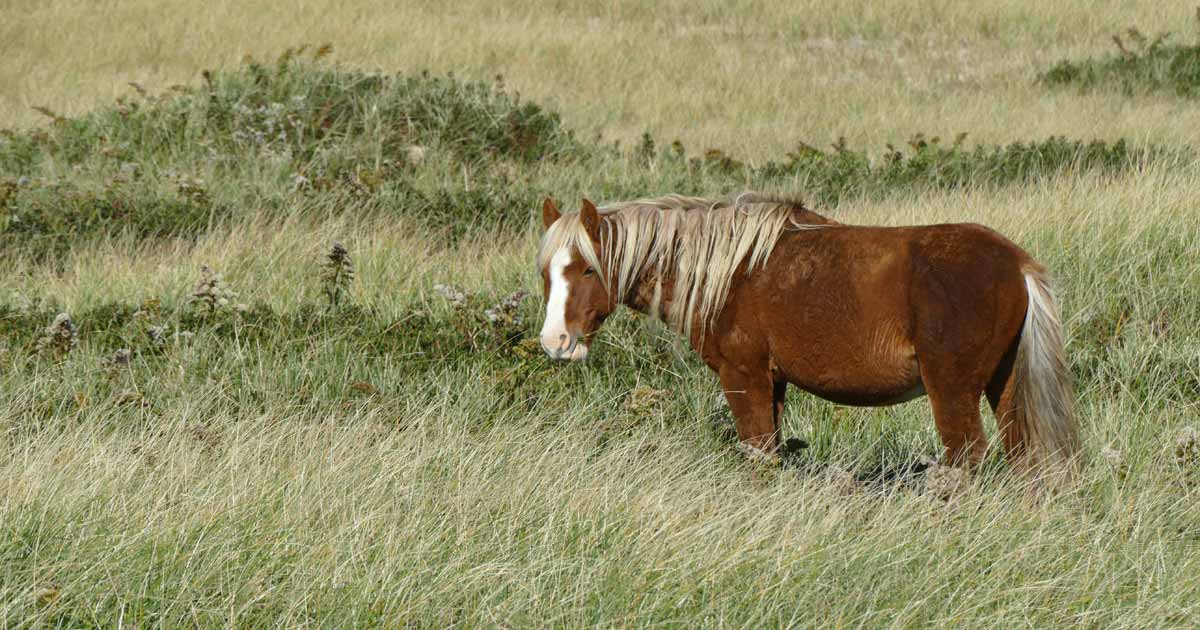
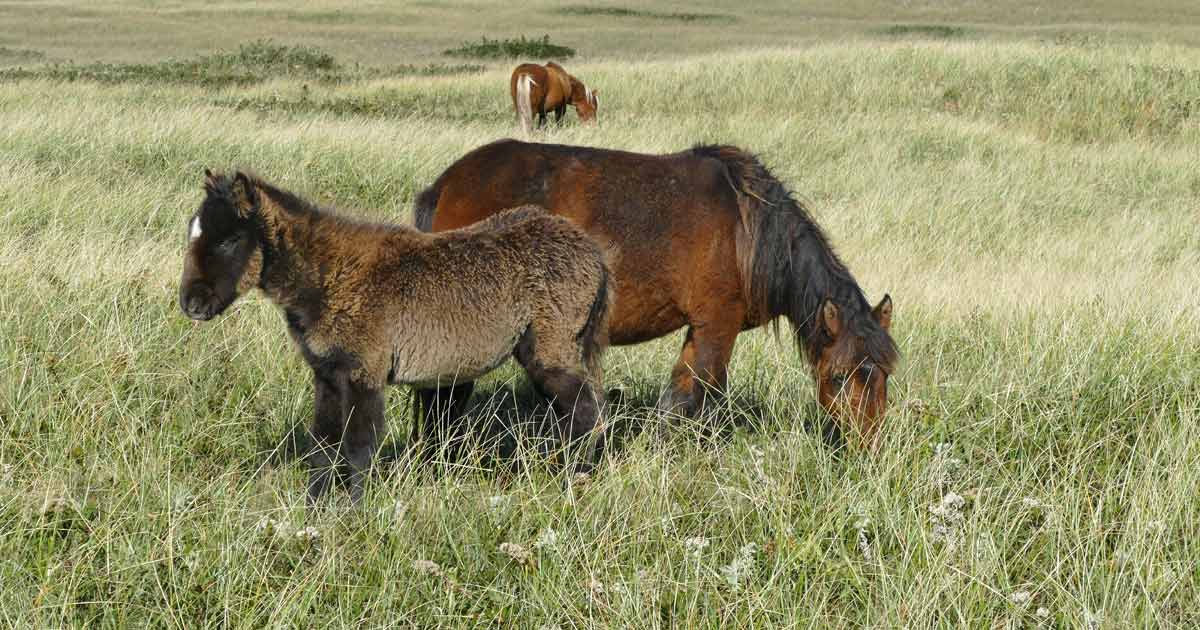 A sunny fall day on Sable Island, with scattered clouds, a high of 12.9°C, and southwesterly wind peaking at 22 knots (40 km/h). In this field of marram grass, the darker green vegetation is Seaside Goldenrod and Northern Bayberry. The band stallion and mare graze marram, and the foal stands resting at mother’s side. The foal’s colour is patchy as dark hair replaces the faded coat, so far most noticeable on face, neck, chest and legs. When fully grown in, the new coat will be heavier for winter.
A sunny fall day on Sable Island, with scattered clouds, a high of 12.9°C, and southwesterly wind peaking at 22 knots (40 km/h). In this field of marram grass, the darker green vegetation is Seaside Goldenrod and Northern Bayberry. The band stallion and mare graze marram, and the foal stands resting at mother’s side. The foal’s colour is patchy as dark hair replaces the faded coat, so far most noticeable on face, neck, chest and legs. When fully grown in, the new coat will be heavier for winter.
Posted on Facebook, October 31, 2020
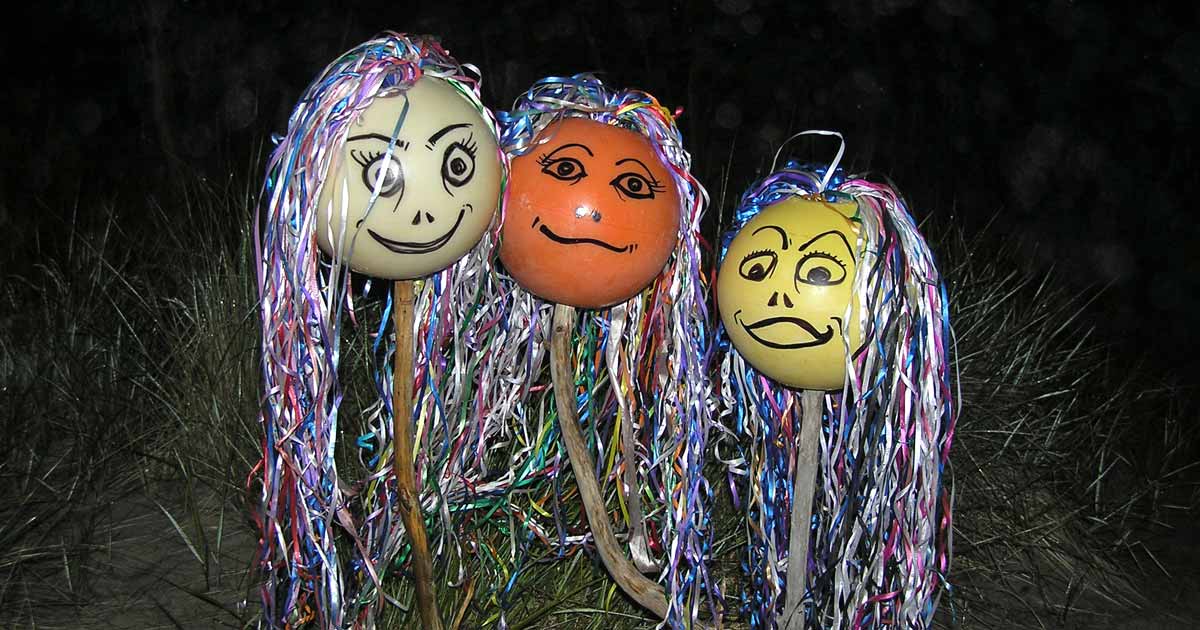
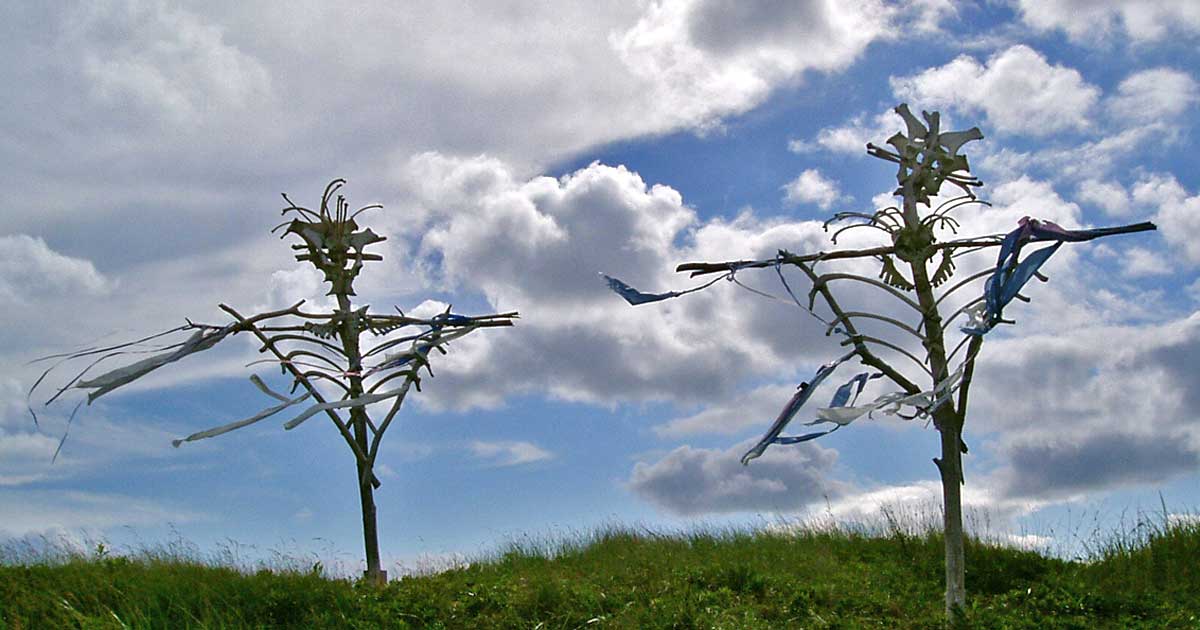 Although these beach-debris buddies appeared on Sable Island, very briefly, 15 years ago during a warm night in June, they suggest the pumpkin heads and spooky notions of Halloween. October 31st is roughly halfway between fall equinox and winter solstice. The two tall guardian figures, Moth and Bat, are more in the spirit of these seasonal occasions. Seventeen years ago, they stood in fair weather and wild storms throughout a summer and fall. They and the buddies are long gone.
Although these beach-debris buddies appeared on Sable Island, very briefly, 15 years ago during a warm night in June, they suggest the pumpkin heads and spooky notions of Halloween. October 31st is roughly halfway between fall equinox and winter solstice. The two tall guardian figures, Moth and Bat, are more in the spirit of these seasonal occasions. Seventeen years ago, they stood in fair weather and wild storms throughout a summer and fall. They and the buddies are long gone.
Posted on Facebook, October 30, 2020
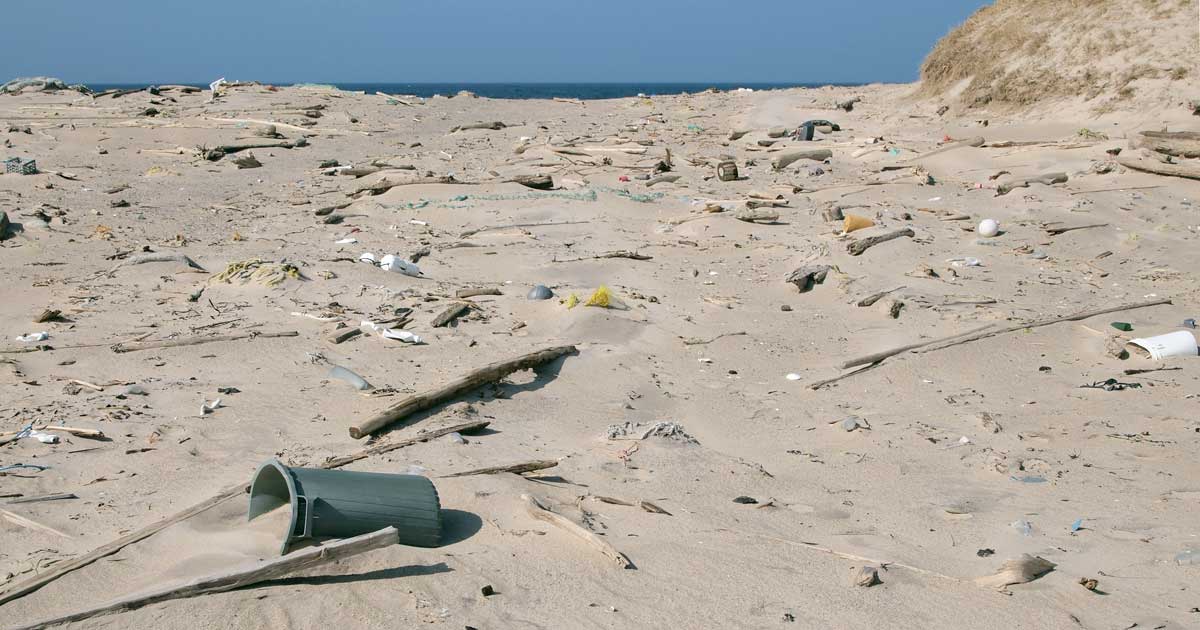
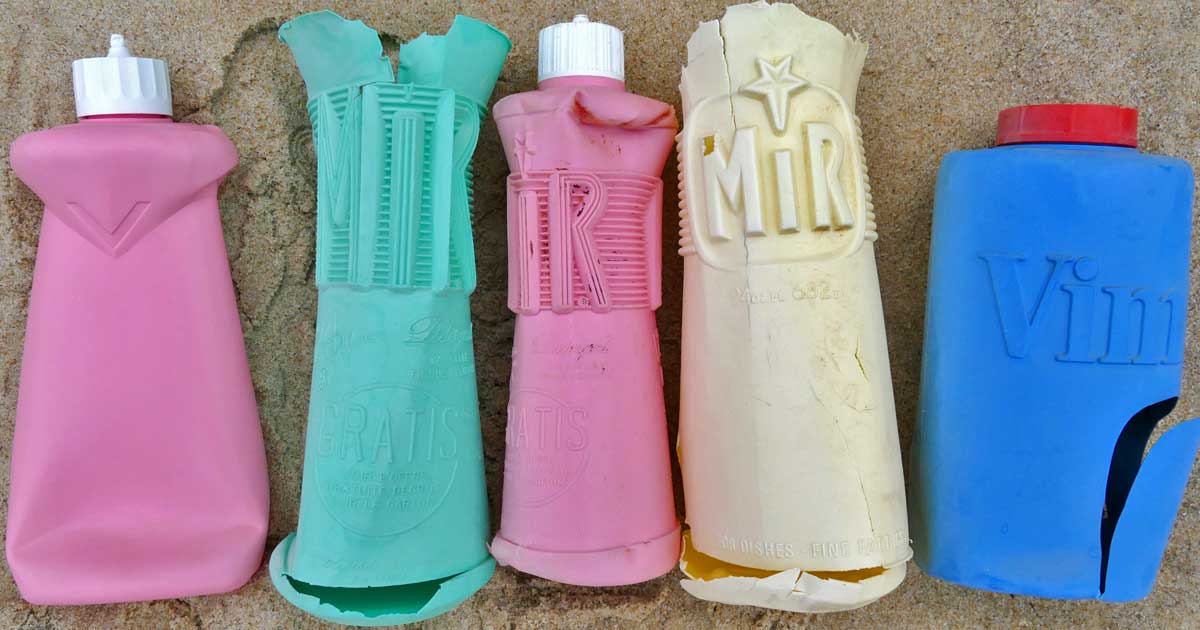 Much of the debris that washes ashore on Sable Island is buried by wind-blown sand or is carried by wind or flooding into areas between or behind the dunes, and then buried by sand. Years or decades later, high winds can scour away the accumulated sand and expose large amounts of old materials. Among the driftwood and other natural objects, there is a lot of manmade debris, including plastic containers that could be 30 or more years old. Does anyone recognize these containers? Vim is still a well-known brand, but how long ago was this style of container in use? The embossed labelling on the MIR detergent is ‘old style’ – when was this design last used? Dating such products provides insights regarding the persistence of plastics beached on the island.
Much of the debris that washes ashore on Sable Island is buried by wind-blown sand or is carried by wind or flooding into areas between or behind the dunes, and then buried by sand. Years or decades later, high winds can scour away the accumulated sand and expose large amounts of old materials. Among the driftwood and other natural objects, there is a lot of manmade debris, including plastic containers that could be 30 or more years old. Does anyone recognize these containers? Vim is still a well-known brand, but how long ago was this style of container in use? The embossed labelling on the MIR detergent is ‘old style’ – when was this design last used? Dating such products provides insights regarding the persistence of plastics beached on the island.
Posted on Facebook, October 29, 2020
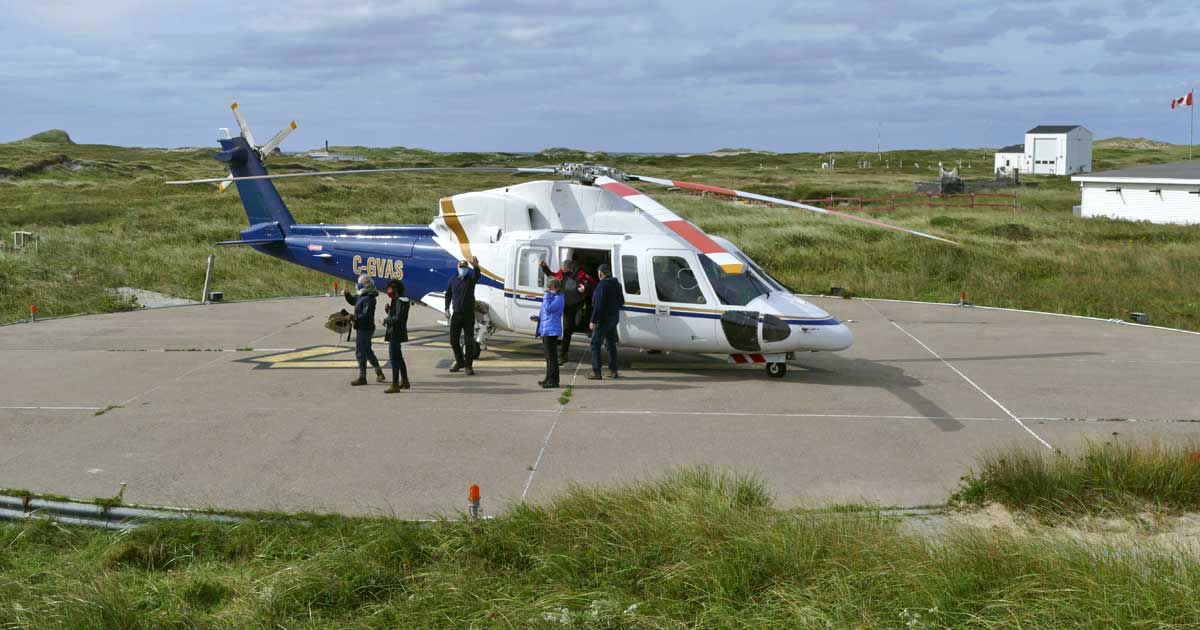
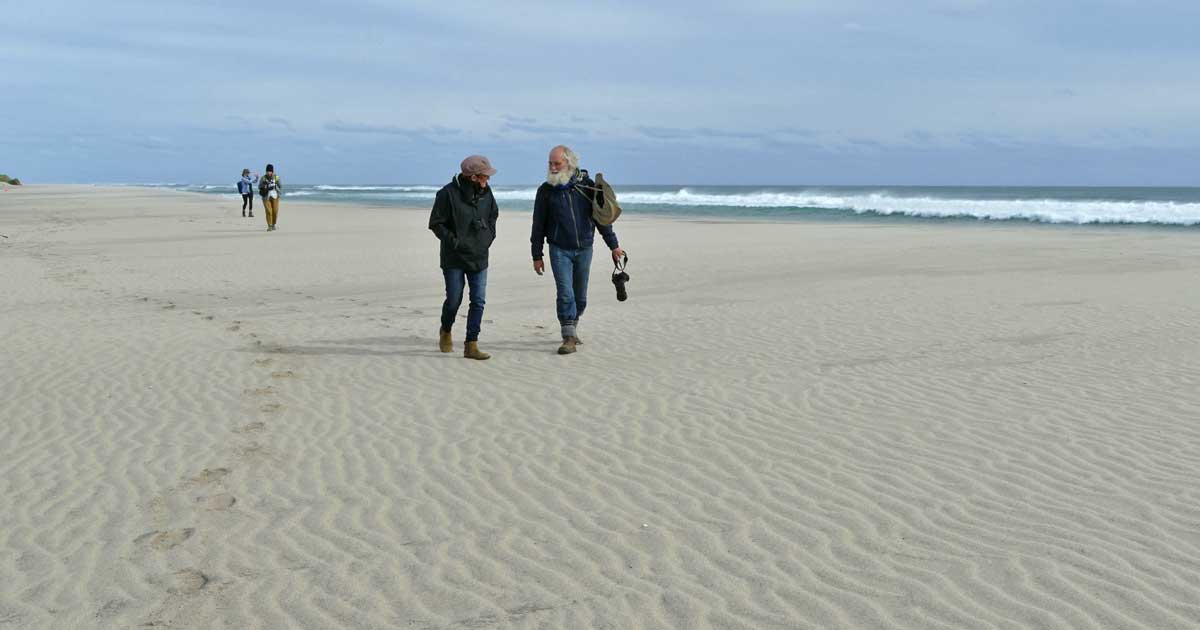 In 2019, the Sable Island Institute held a raffle for a Trip for Two to Sable Island. The winner, Robert Davis, and partner Pascale Gusset, were scheduled to travel to the island with Kattuk Expeditions on September 14th (with the 15th as an alternate). However, the weather didn’t co-operate, and the trip had to be rescheduled for 2020. So, a year later, on September 20th, the Kattuk group, with Robert and Pascale, arrived by helicopter. It was a wonderful autumn day – exuberant weather, fall colours, seals and horses in sight, Ipswich Sparrows hopping about, sandblasted bones gleaming white – a day for seeing, feeling, and breathing Sable Island.
In 2019, the Sable Island Institute held a raffle for a Trip for Two to Sable Island. The winner, Robert Davis, and partner Pascale Gusset, were scheduled to travel to the island with Kattuk Expeditions on September 14th (with the 15th as an alternate). However, the weather didn’t co-operate, and the trip had to be rescheduled for 2020. So, a year later, on September 20th, the Kattuk group, with Robert and Pascale, arrived by helicopter. It was a wonderful autumn day – exuberant weather, fall colours, seals and horses in sight, Ipswich Sparrows hopping about, sandblasted bones gleaming white – a day for seeing, feeling, and breathing Sable Island.
Posted on Facebook, October 28, 2020
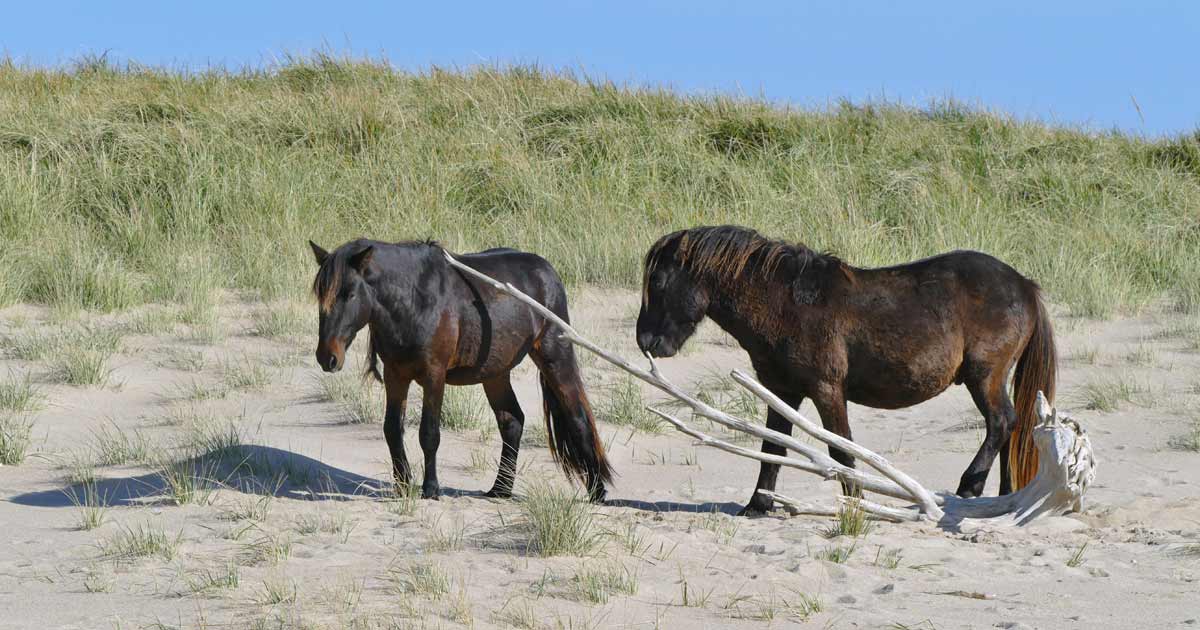
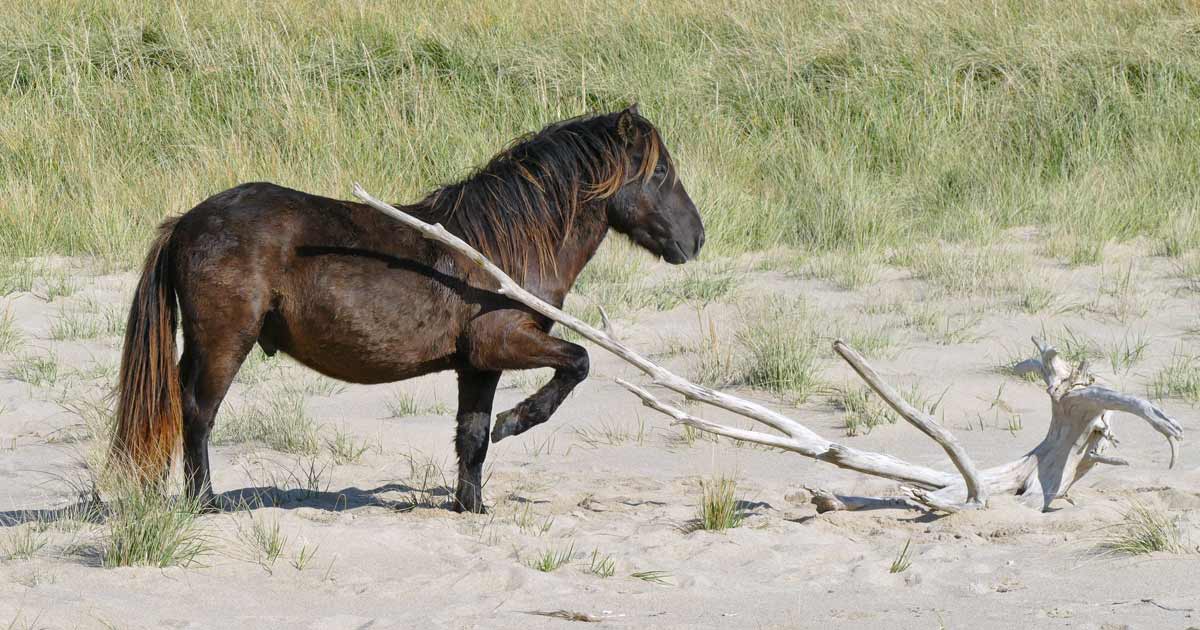 Two Sable Island horses, both males living near the east end of the island, spend about 20 minutes rubbing on a piece of bleached driftwood on north beach. As their coats thicken for winter, they are losing some of their summer gloss. They have been gaining weight during the summer and fall as they feed on marram grass and the abundant beach pea. With the weight gain and their heavier coats, some of the horses are beginning to show a chunkier look typical of the season.
Two Sable Island horses, both males living near the east end of the island, spend about 20 minutes rubbing on a piece of bleached driftwood on north beach. As their coats thicken for winter, they are losing some of their summer gloss. They have been gaining weight during the summer and fall as they feed on marram grass and the abundant beach pea. With the weight gain and their heavier coats, some of the horses are beginning to show a chunkier look typical of the season.
Posted on Facebook, October 27, 2020
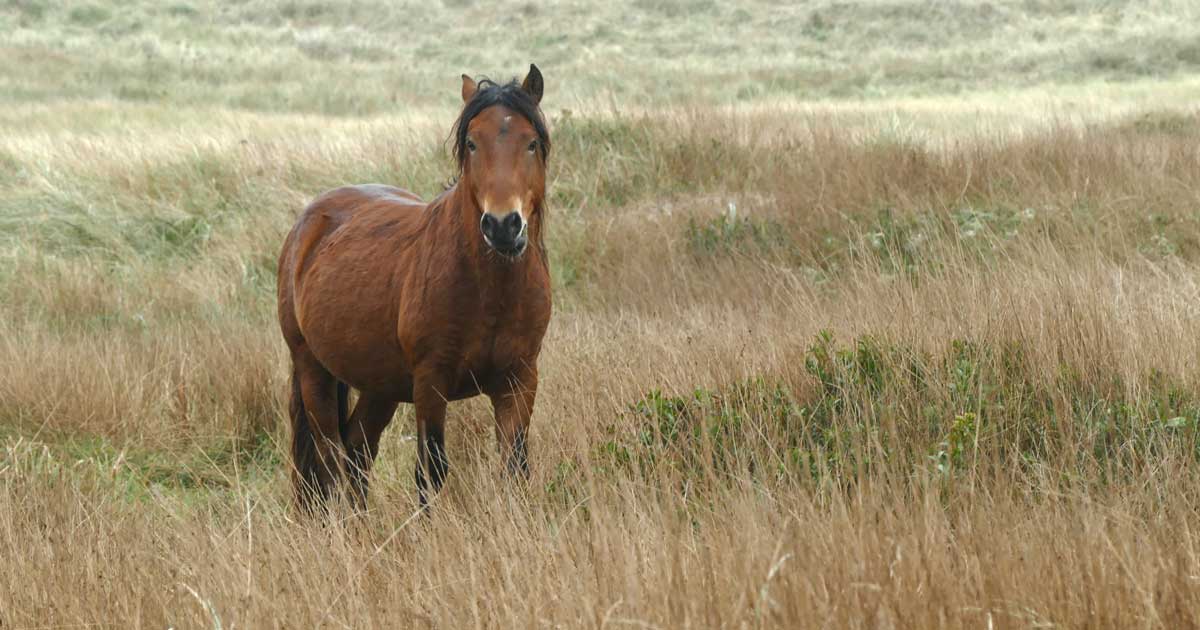
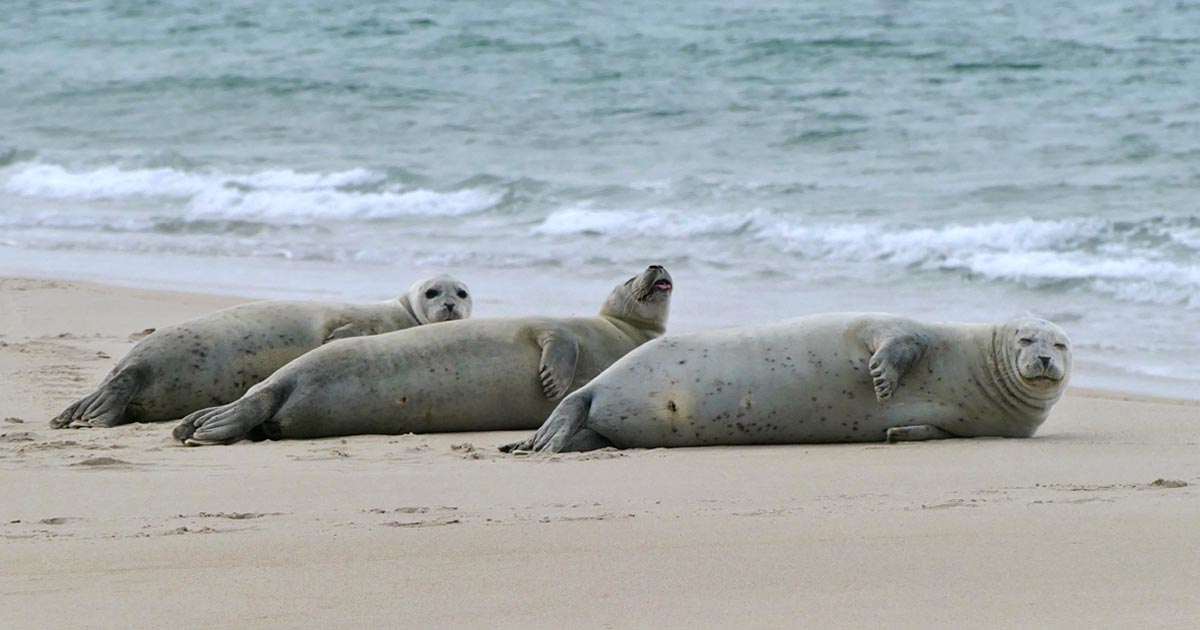 It was a mild and soggy day on Sable Island, with fog and occasional rain (total 2.2 mm), a maximum temperature of 16.2°C, and a southwesterly wind of mostly around 10 knots (18 km/h). Although the horses’ coats were damp, the light breeze and relatively warm temperature offset some of the discomfort they might have felt. For the three Harbour Seals (who really shouldn’t mind getting wet), it was a lovely day to rest on the beach – no high winds blowing sand into their eyes.
It was a mild and soggy day on Sable Island, with fog and occasional rain (total 2.2 mm), a maximum temperature of 16.2°C, and a southwesterly wind of mostly around 10 knots (18 km/h). Although the horses’ coats were damp, the light breeze and relatively warm temperature offset some of the discomfort they might have felt. For the three Harbour Seals (who really shouldn’t mind getting wet), it was a lovely day to rest on the beach – no high winds blowing sand into their eyes.
Posted on Facebook, October 26, 2020
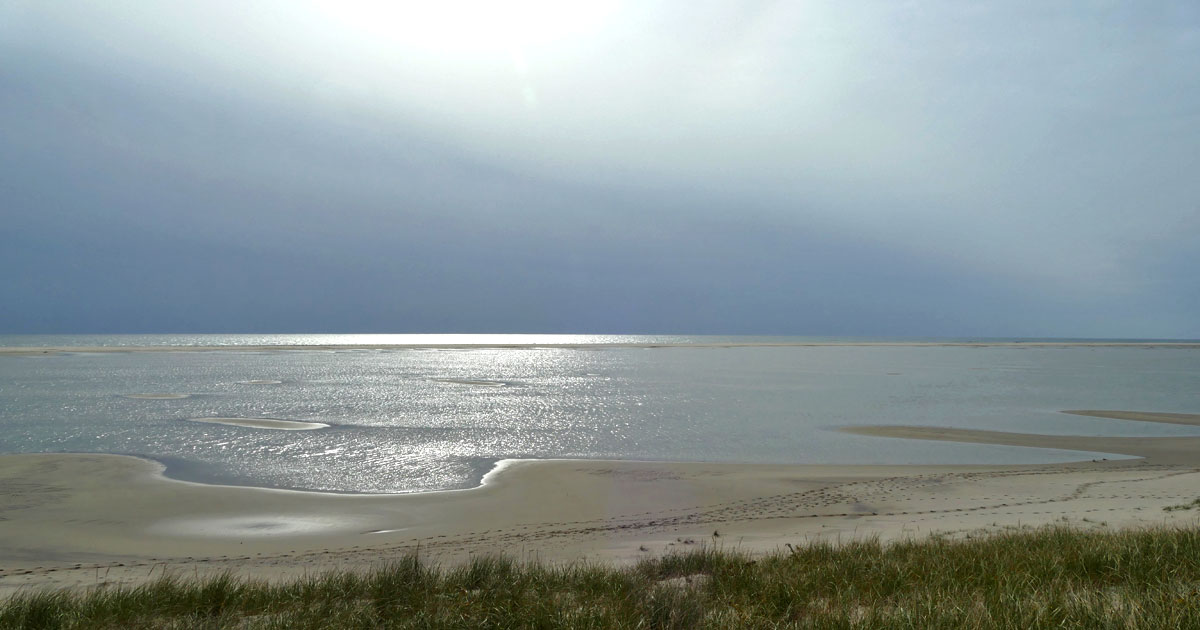
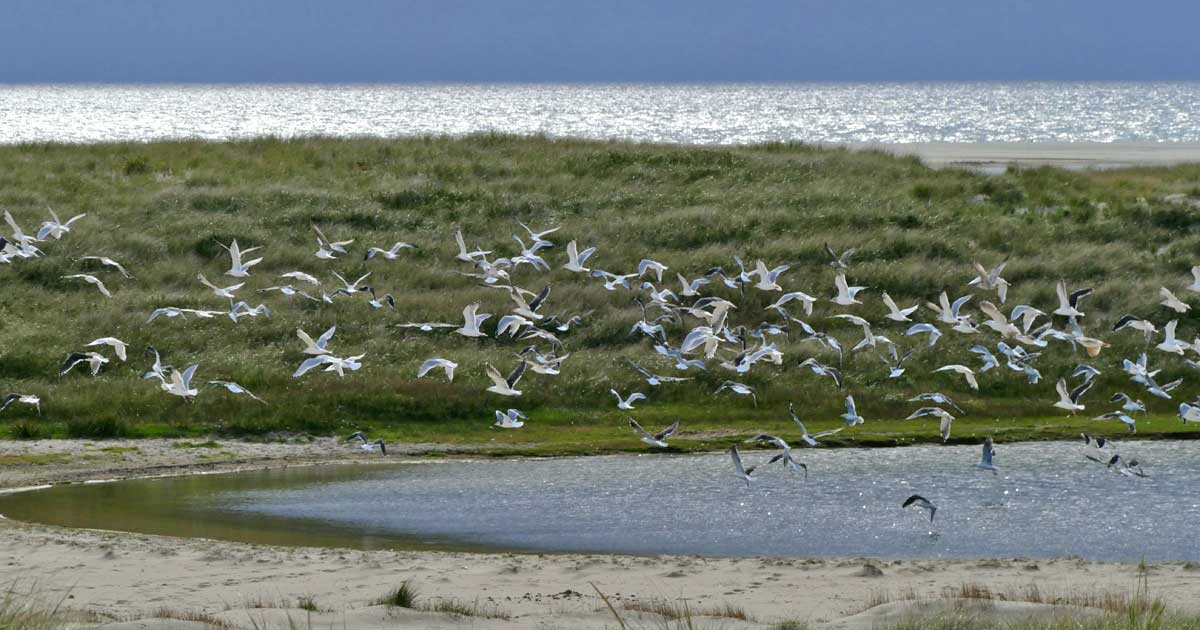 The storm has passed, the wind has dropped (peaking at only 19 knots), and the maximum temperature was a nippy 9.8°C. Along the south side of Sable Island, the ocean was relatively calm today, but most of the wide and flat south beach remains flooded after the swell and big waves generated by Hurricane Epsilon. As a mixed flock of Herring and Great Black-backed Gulls circles over the east end of Gallinule Pond, the silvery sea gleams in the distance.
The storm has passed, the wind has dropped (peaking at only 19 knots), and the maximum temperature was a nippy 9.8°C. Along the south side of Sable Island, the ocean was relatively calm today, but most of the wide and flat south beach remains flooded after the swell and big waves generated by Hurricane Epsilon. As a mixed flock of Herring and Great Black-backed Gulls circles over the east end of Gallinule Pond, the silvery sea gleams in the distance.
Posted on Facebook, October 25, 2020
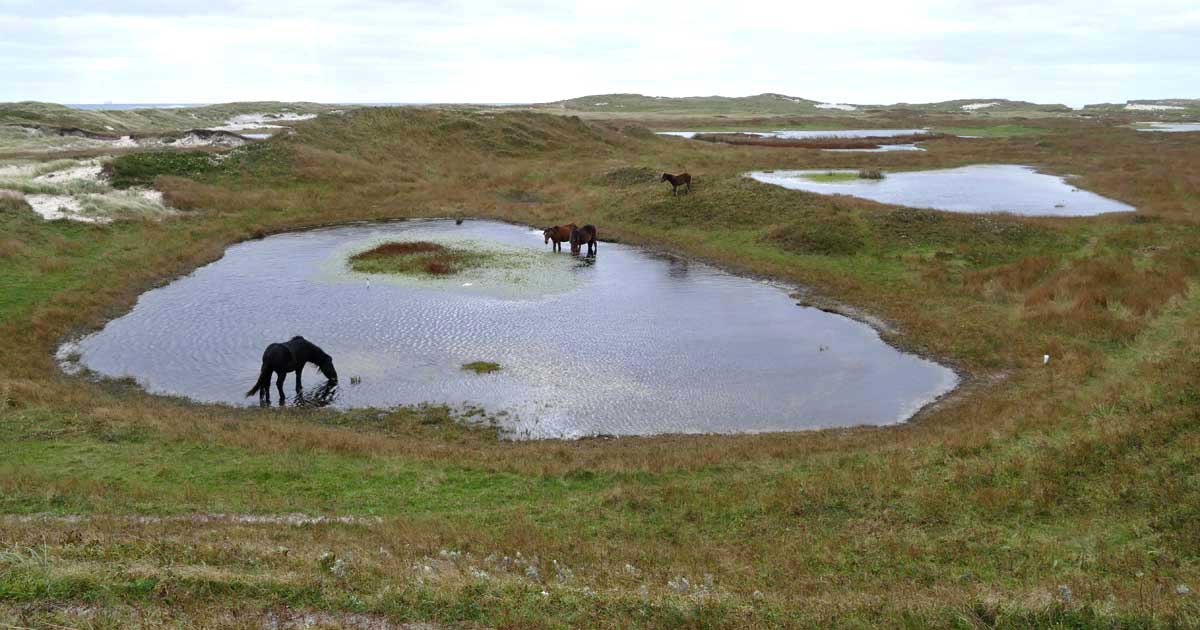
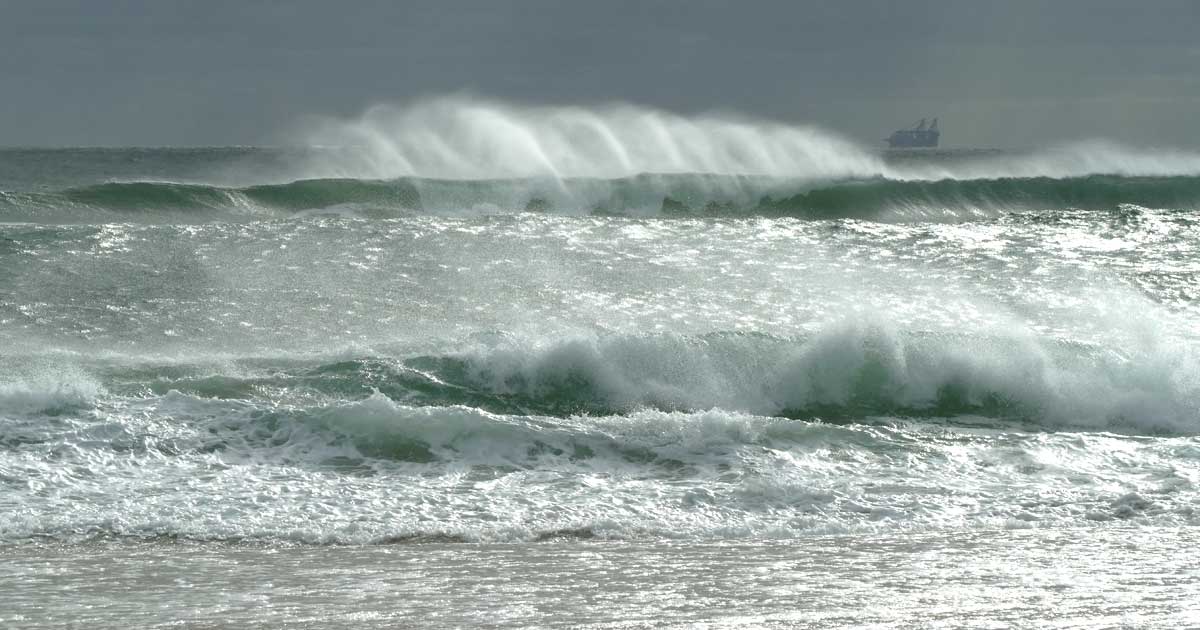 Sable Island has been feeling the effects of Hurricane Epsilon – large swells and high winds. Today, with the wind gusting to 35 knots (65 km/h), a family band was peacefully eating pond vegetation in a relatively sheltered hollow. Meanwhile, along the south side, the northwesterly wind was blowing spindrift high off the cresting waves. And far out, near the horizon, the huge SSCV Thialf, a semi-submersible crane vessel, was being towed eastwards towards the Venture platform to complete the removal of the structure.
Sable Island has been feeling the effects of Hurricane Epsilon – large swells and high winds. Today, with the wind gusting to 35 knots (65 km/h), a family band was peacefully eating pond vegetation in a relatively sheltered hollow. Meanwhile, along the south side, the northwesterly wind was blowing spindrift high off the cresting waves. And far out, near the horizon, the huge SSCV Thialf, a semi-submersible crane vessel, was being towed eastwards towards the Venture platform to complete the removal of the structure.
Posted on Facebook, October 24, 2020
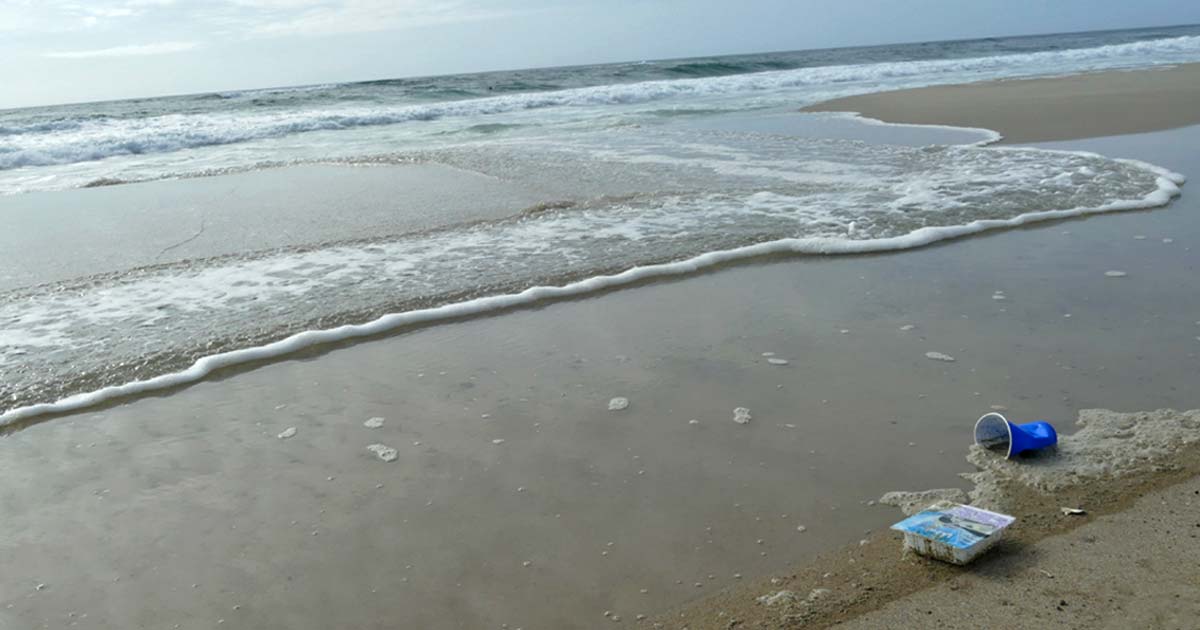
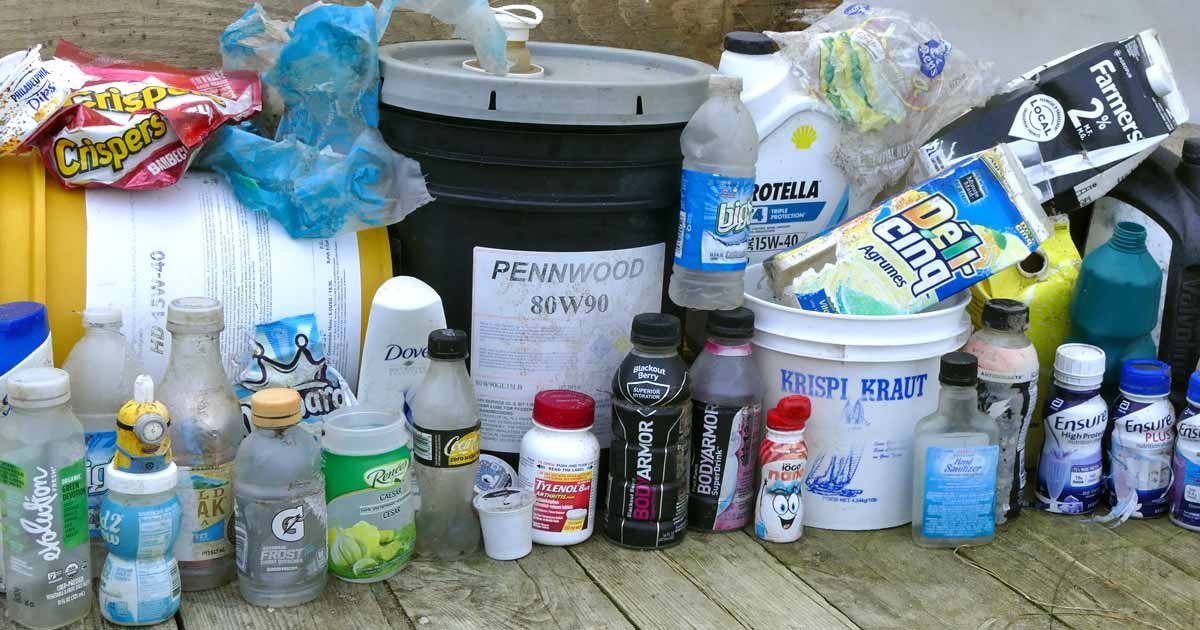 With northeasterly winds gusting to >30 knots (56 km/h), and rain, it has been a day to spend indoors sorting through plastic debris that washed ashore on the island during the past two weeks. It was collected during the last beach survey. This survey program focuses on items that have intact labels. Label information about the country of origin, manufacturer, and uses of the plastic items helps us understand how and why these materials are getting into the ocean. Most of the containers had been used for household cleaners, engine oil, personal care products, medications, and food and beverages – and many are familiar brands. Although most originated in Canada and the USA, some were products of Caribbean countries, and a few originated in distant locations such as Malaysia and Italy. Many of the items may have been lost (accidentally or deliberately) from ships.
With northeasterly winds gusting to >30 knots (56 km/h), and rain, it has been a day to spend indoors sorting through plastic debris that washed ashore on the island during the past two weeks. It was collected during the last beach survey. This survey program focuses on items that have intact labels. Label information about the country of origin, manufacturer, and uses of the plastic items helps us understand how and why these materials are getting into the ocean. Most of the containers had been used for household cleaners, engine oil, personal care products, medications, and food and beverages – and many are familiar brands. Although most originated in Canada and the USA, some were products of Caribbean countries, and a few originated in distant locations such as Malaysia and Italy. Many of the items may have been lost (accidentally or deliberately) from ships.
Posted on Facebook, October 23, 2020
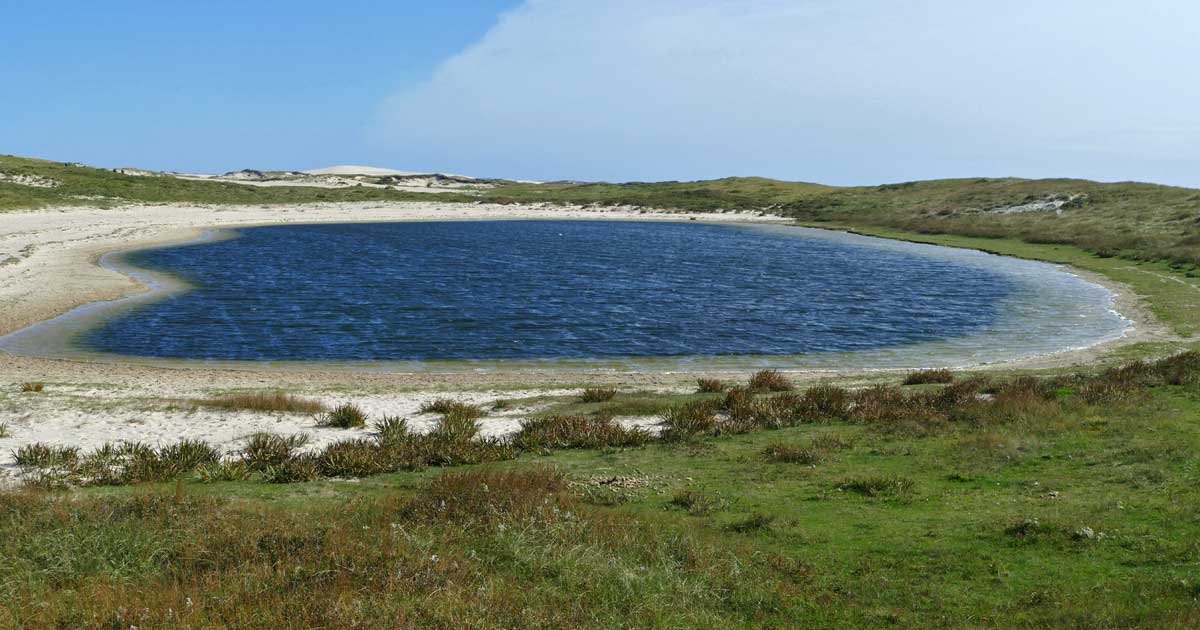
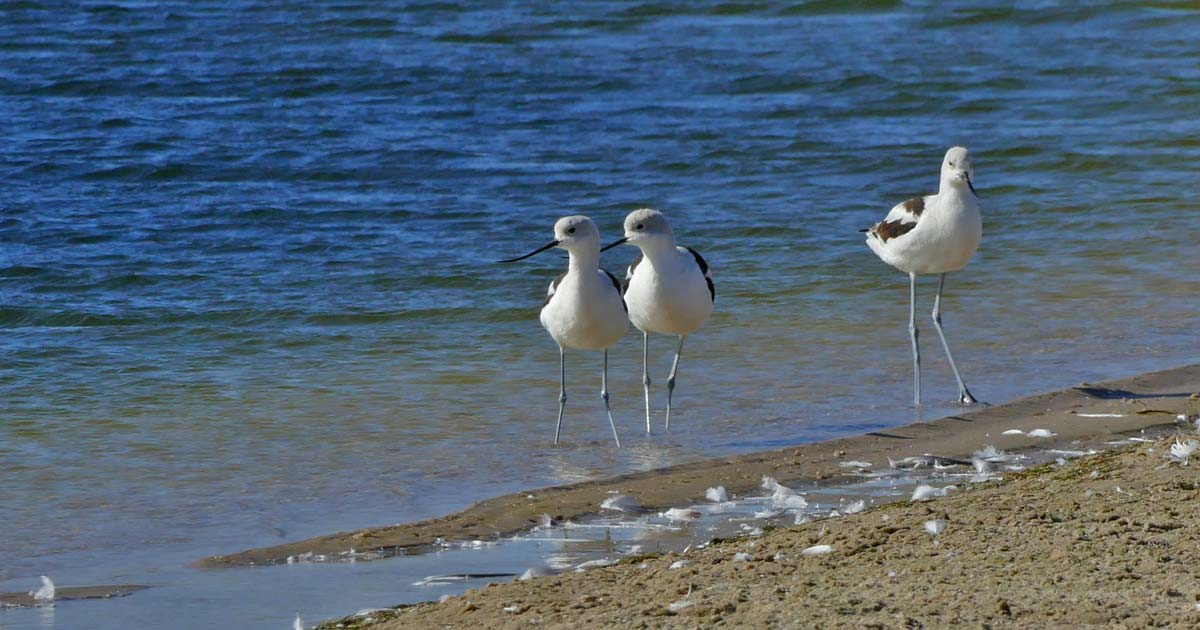 A chilly day with a cool northeasterly wind (gusting to 22 knots) and a maximum temperature of 12.8°C. At Gallinule Pond, one of the two largest freshwater ponds on Sable Island, the only horses in sight are in the distance (three small dark spots on the dune slope in the upper left of the photo). But elegant and unusual visitors are at the pond’s edge: three American Avocets. This shorebird species is a rare sighting on the island. The first record for Sable was one individual in September 1969.
A chilly day with a cool northeasterly wind (gusting to 22 knots) and a maximum temperature of 12.8°C. At Gallinule Pond, one of the two largest freshwater ponds on Sable Island, the only horses in sight are in the distance (three small dark spots on the dune slope in the upper left of the photo). But elegant and unusual visitors are at the pond’s edge: three American Avocets. This shorebird species is a rare sighting on the island. The first record for Sable was one individual in September 1969.
Posted on Facebook, October 22, 2020
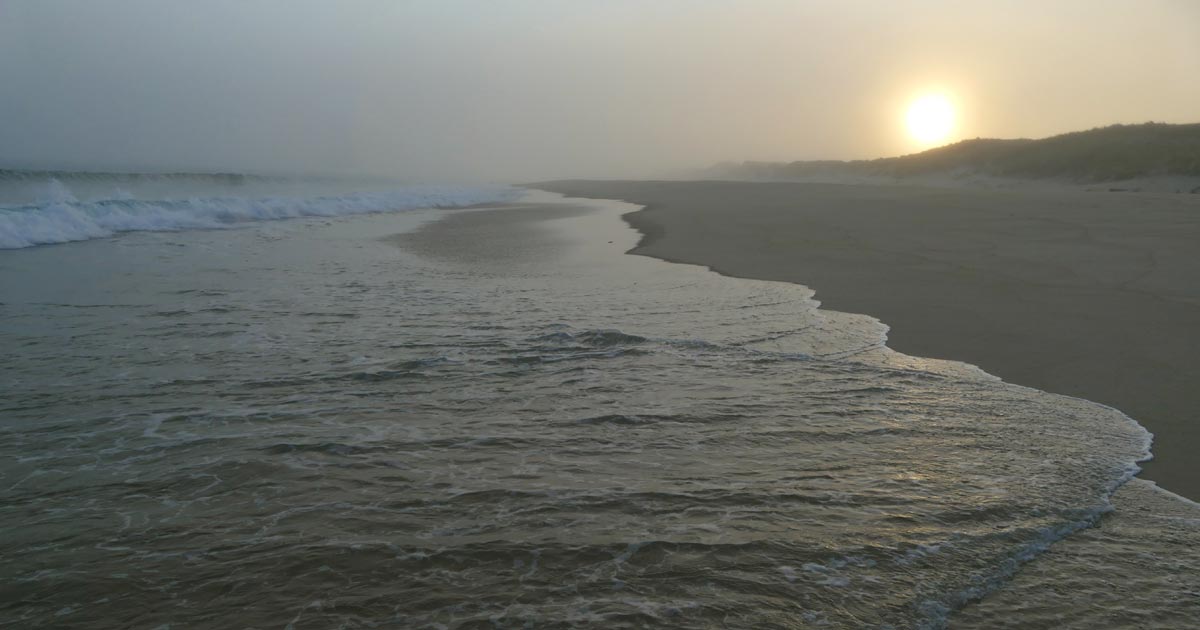
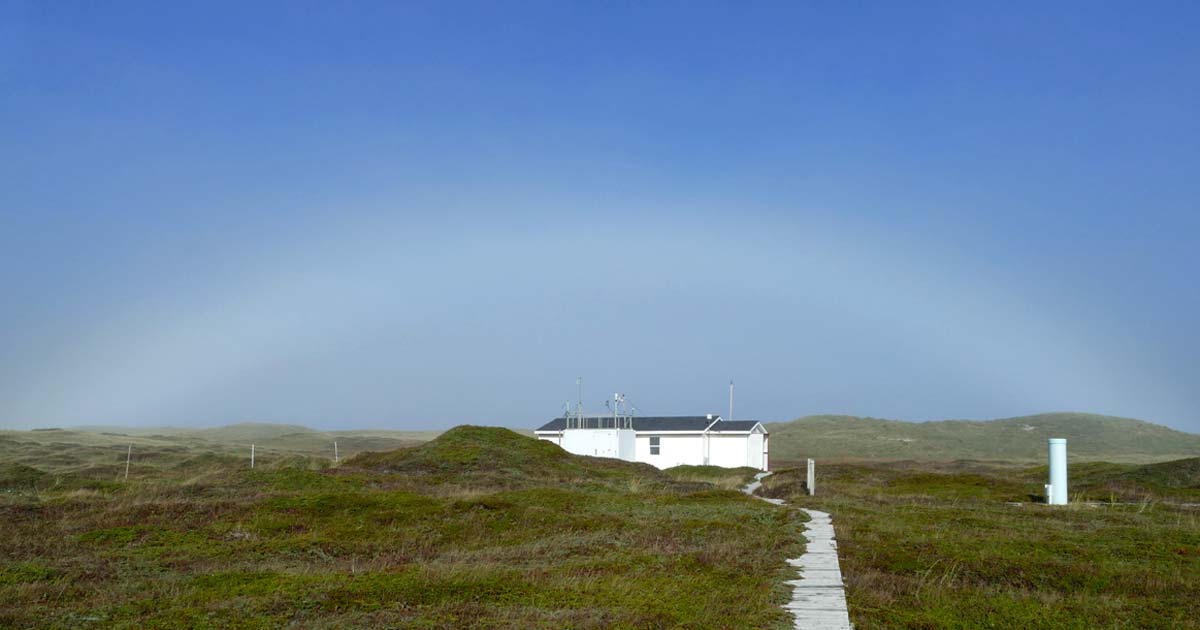 Sunrise over north beach in the fog. Today the maximum temperature was 16.6°C, with a light southwesterly wind. And with 100% humidity, it was mostly foggy. A fog bow (shown here over MSC’s air chemistry building at the Sable Island Station) was visible for most of the day. A fog bow is a phenomenon similar to a rainbow. However, it appears in fog rather than in rain. Because of the very small size of water droplets that cause fog (smaller than 0.05 mm) the fog bow has only very weak colors or none at all. So, a fog bow is also called a white rainbow. They are commonly seen on Sable Island.
Sunrise over north beach in the fog. Today the maximum temperature was 16.6°C, with a light southwesterly wind. And with 100% humidity, it was mostly foggy. A fog bow (shown here over MSC’s air chemistry building at the Sable Island Station) was visible for most of the day. A fog bow is a phenomenon similar to a rainbow. However, it appears in fog rather than in rain. Because of the very small size of water droplets that cause fog (smaller than 0.05 mm) the fog bow has only very weak colors or none at all. So, a fog bow is also called a white rainbow. They are commonly seen on Sable Island.
Posted on Facebook, October 21, 2020
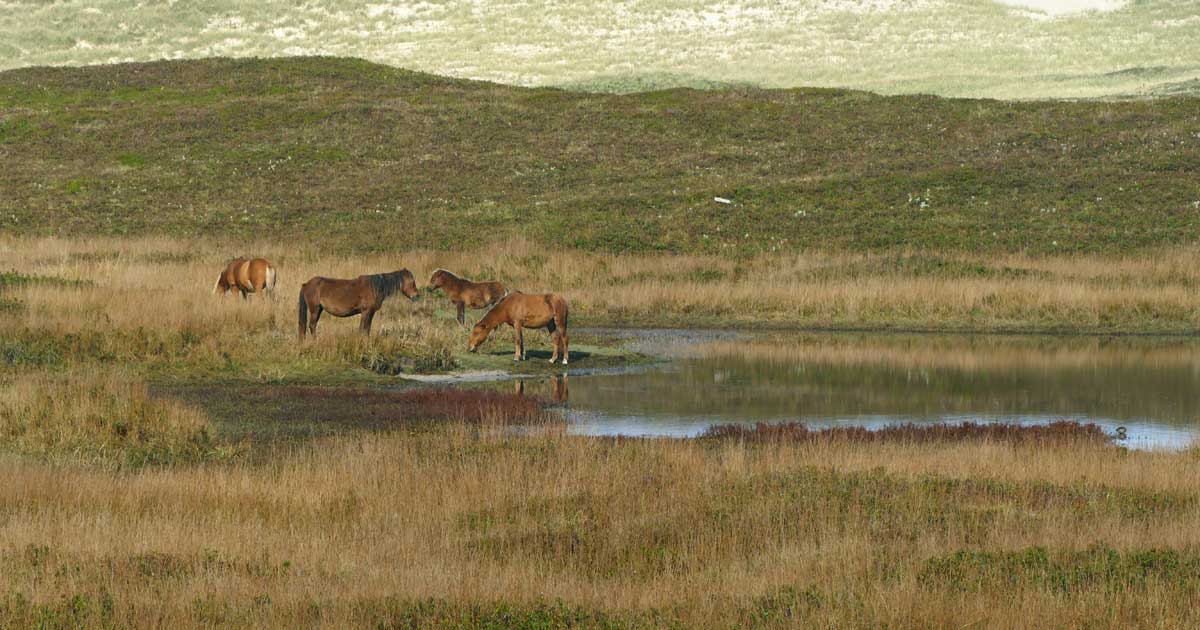
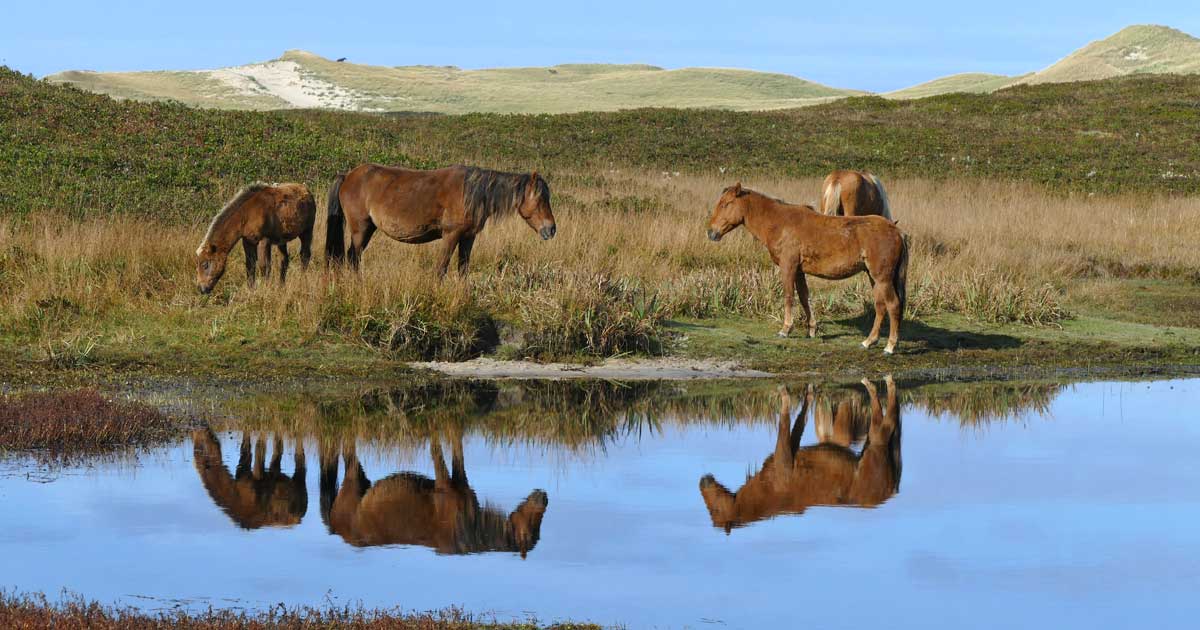 During autumn, as much of Sable Island’s vegetation turns to yellow, golden, russet and brown, the landscape and the horses share many of the same colours and tones. All the more noticeable as the horses’ coats thicken for winter. Today was partly sunny and a little cooler than yesterday (maximum 17.3°C), and with a wind of less than 10 knots for most of the day, there was barely a ripple on the surface of the freshwater ponds.
During autumn, as much of Sable Island’s vegetation turns to yellow, golden, russet and brown, the landscape and the horses share many of the same colours and tones. All the more noticeable as the horses’ coats thicken for winter. Today was partly sunny and a little cooler than yesterday (maximum 17.3°C), and with a wind of less than 10 knots for most of the day, there was barely a ripple on the surface of the freshwater ponds.
Posted on Facebook, October 20, 2020
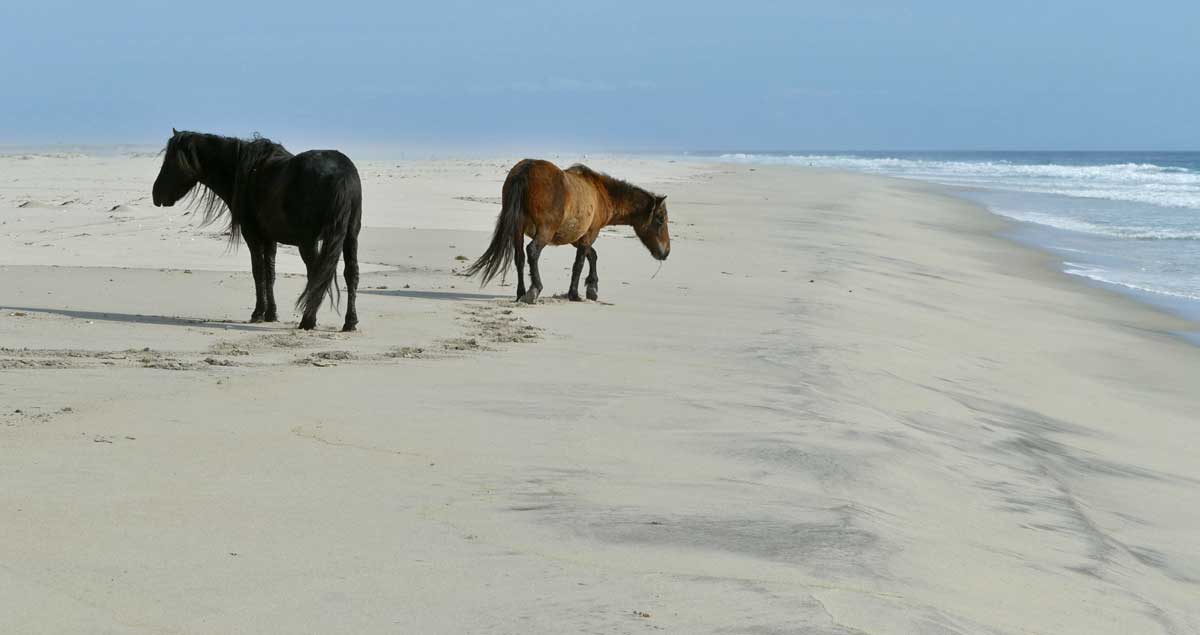
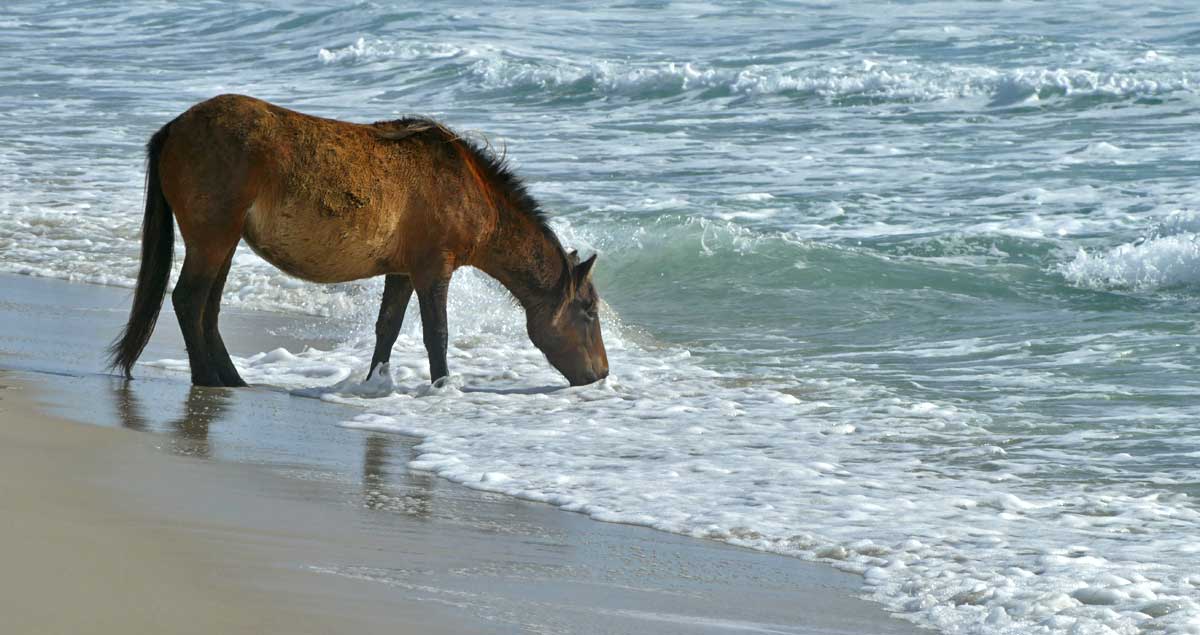 Another warm and sunny day on the beach with a 14 knot (26 km/h) southeasterly breeze and a maximum temperature of 18.5°C. A Sable Island stallion and a mare nibble bits of seaweed and plant fragments as they meander eastward on south beach. The mare walks down into the swash zone to take a few sips of seawater and then rejoins the male.
Another warm and sunny day on the beach with a 14 knot (26 km/h) southeasterly breeze and a maximum temperature of 18.5°C. A Sable Island stallion and a mare nibble bits of seaweed and plant fragments as they meander eastward on south beach. The mare walks down into the swash zone to take a few sips of seawater and then rejoins the male.
Posted on Facebook, October 19, 2020
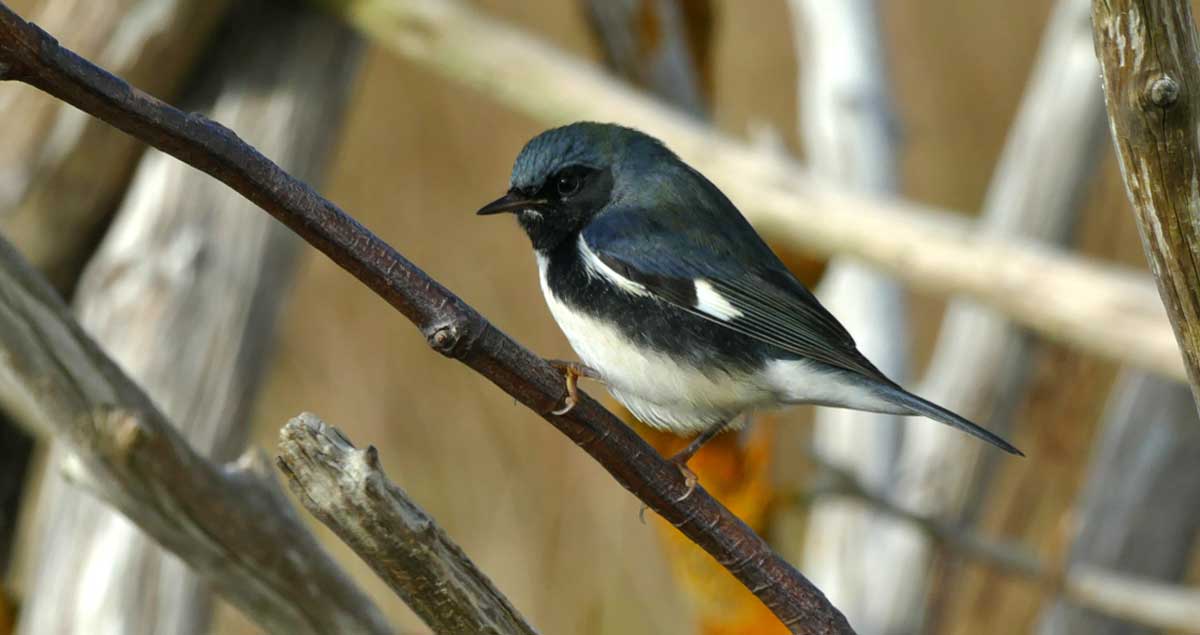
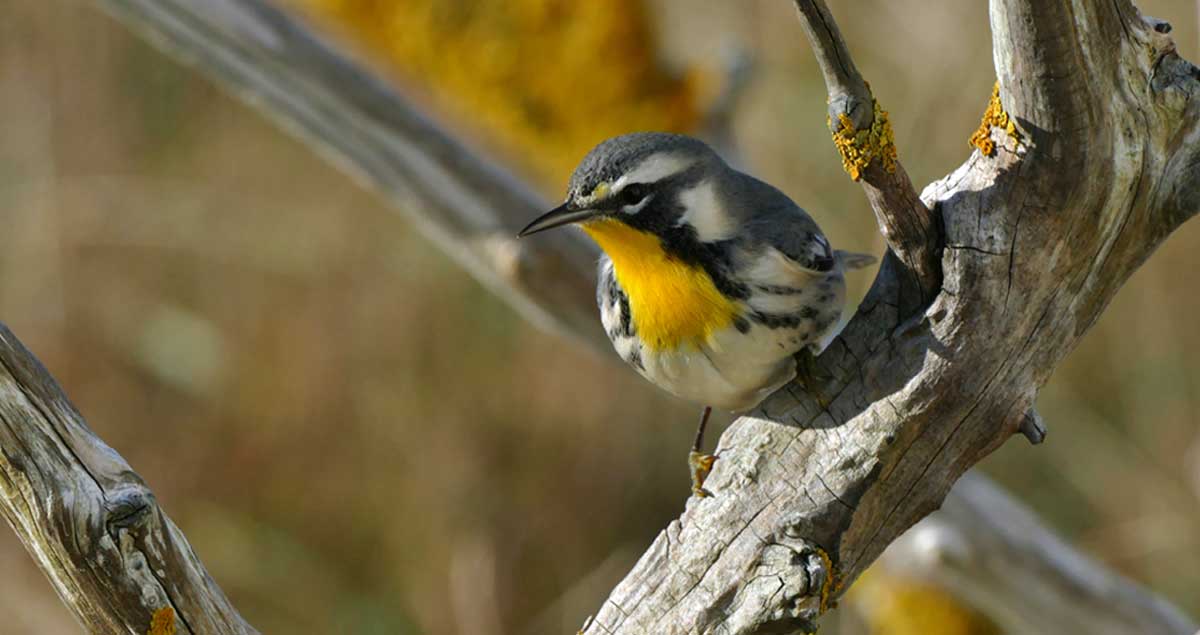 A fine day on Sable Island with a 13 knot (24 km/h) easterly breeze and a maximum temperature of 18.2°C. Among the autumn birds flitting about on the driftwood branches, are a male Black-throated Blue Warbler and a Yellow-throated Warbler (showing just a little yellow in front of the eye, in the supraloral area). The yellow on the warbler’s throat is as vivid and bright as the colour of the sunburst lichen (Xanthoria species) that is abundant on the branches.
A fine day on Sable Island with a 13 knot (24 km/h) easterly breeze and a maximum temperature of 18.2°C. Among the autumn birds flitting about on the driftwood branches, are a male Black-throated Blue Warbler and a Yellow-throated Warbler (showing just a little yellow in front of the eye, in the supraloral area). The yellow on the warbler’s throat is as vivid and bright as the colour of the sunburst lichen (Xanthoria species) that is abundant on the branches.
Posted on Facebook, October 18, 2020
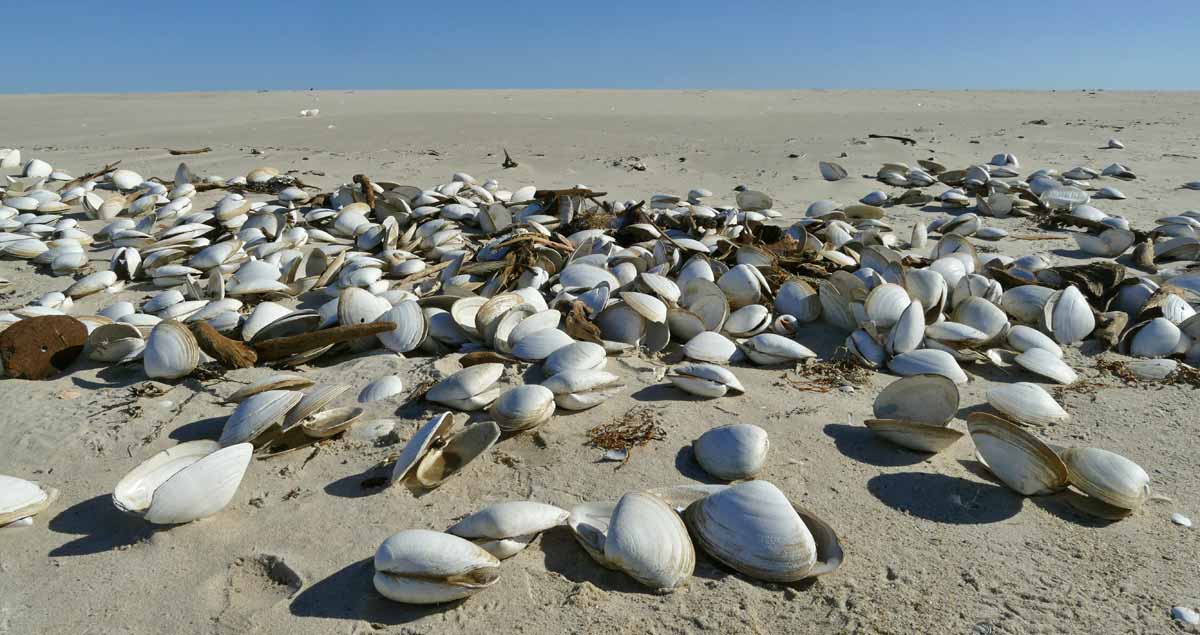
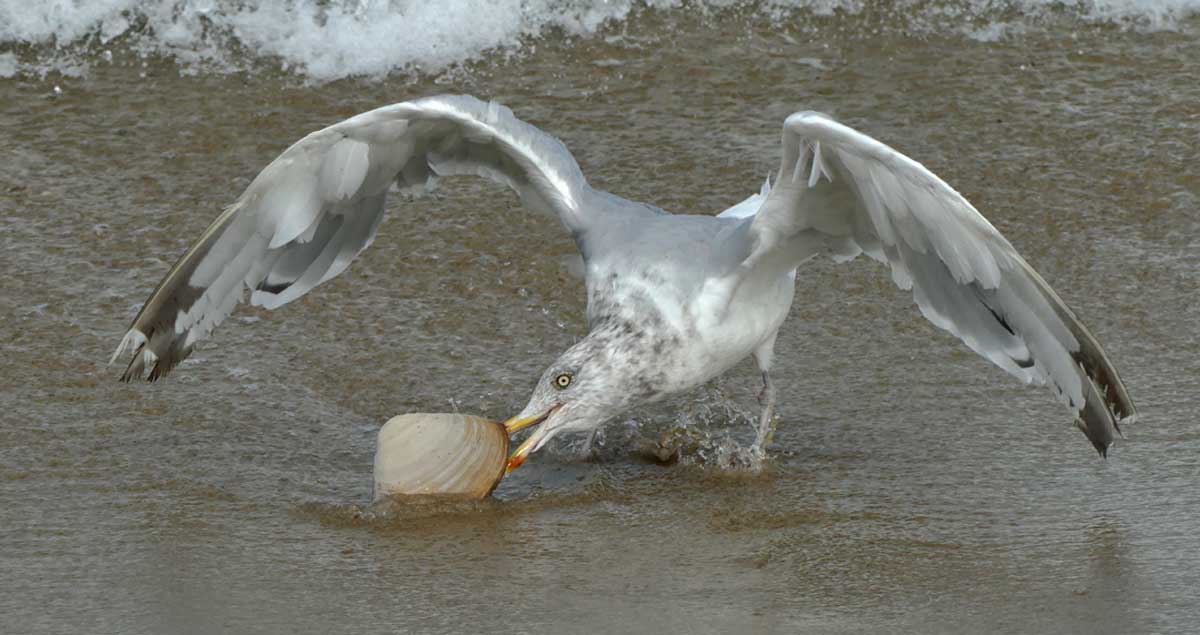 During storms, 100s to 1000s of Atlantic Surf Clams wash ashore on Sable Island. Herring Gulls feed on the dead and dying, leaving empty shells pushed into piles by the waves. However, although doomed, some beached clams are alive enough to clamp shut when poked by a gull that is attempting to pick out its soft parts. This gull is thrashing about trying to dislodge a clam that has a death grip on its upper mandible. The gull’s beak has already been badly damaged in the struggle, an injury that will likely be fatal. This is the second time such a clam-gull misadventure has been observed.
During storms, 100s to 1000s of Atlantic Surf Clams wash ashore on Sable Island. Herring Gulls feed on the dead and dying, leaving empty shells pushed into piles by the waves. However, although doomed, some beached clams are alive enough to clamp shut when poked by a gull that is attempting to pick out its soft parts. This gull is thrashing about trying to dislodge a clam that has a death grip on its upper mandible. The gull’s beak has already been badly damaged in the struggle, an injury that will likely be fatal. This is the second time such a clam-gull misadventure has been observed.
Posted on Facebook, October 17, 2020
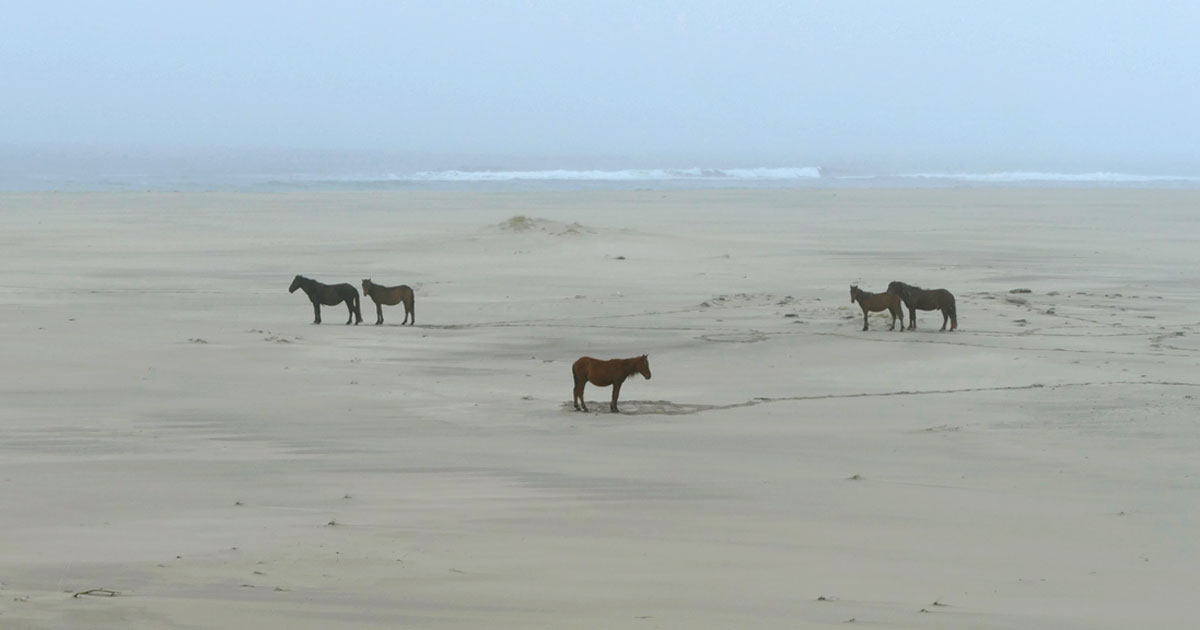
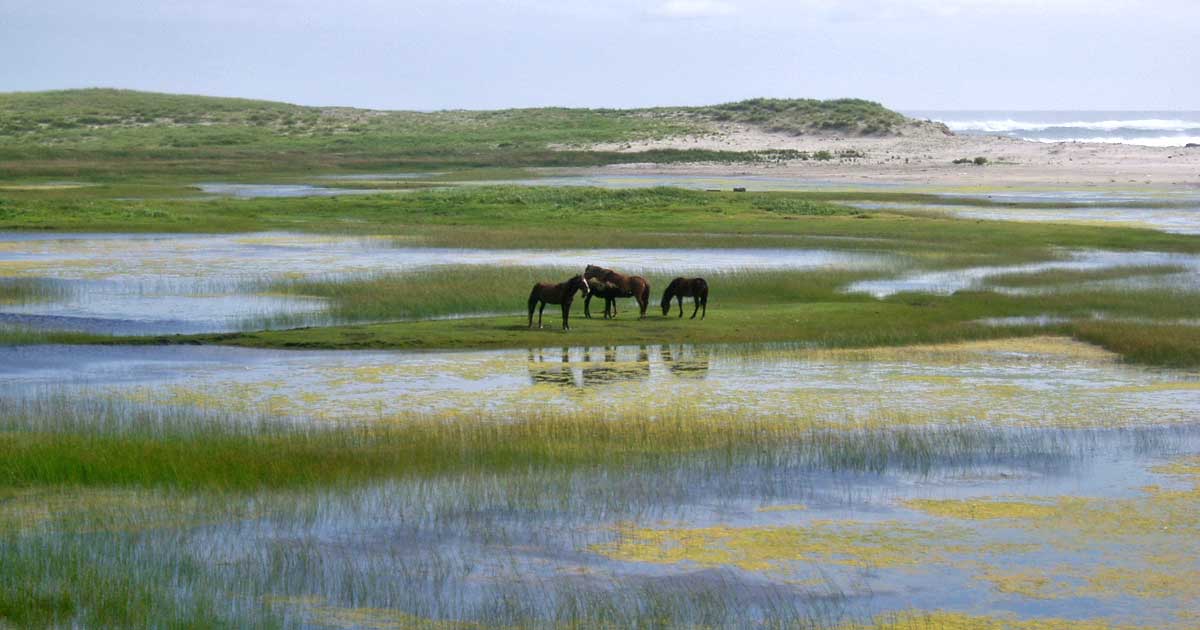 A warm and foggy day on Sable Island, with a maximum temperature of 18.3°C. A family band is standing in a 21-knot sea breeze on the south beach sandflat just east of West Light. Years ago, there was an extensive system of freshwater ponds here. As the south beach dunes eroded, the ponds were flooded by ocean overwash and filled in with sand. The five horses today are standing in roughly the same location as the family band shown in the second photo taken 16 years ago, in September 2004.
A warm and foggy day on Sable Island, with a maximum temperature of 18.3°C. A family band is standing in a 21-knot sea breeze on the south beach sandflat just east of West Light. Years ago, there was an extensive system of freshwater ponds here. As the south beach dunes eroded, the ponds were flooded by ocean overwash and filled in with sand. The five horses today are standing in roughly the same location as the family band shown in the second photo taken 16 years ago, in September 2004.
Posted on Facebook, October 16, 2020
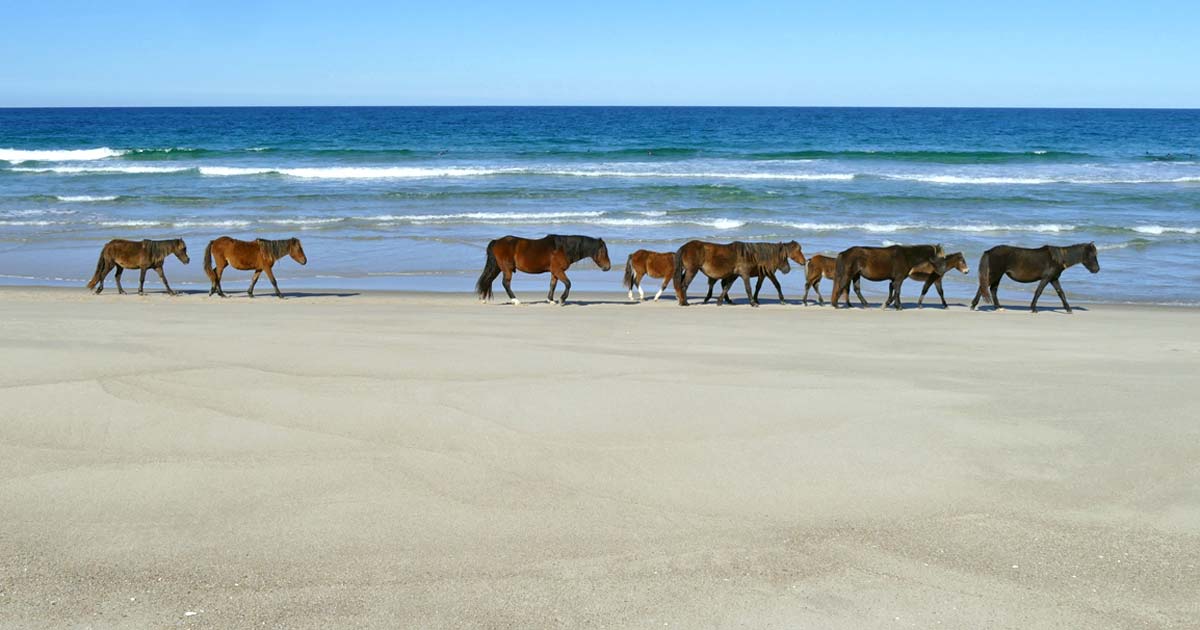
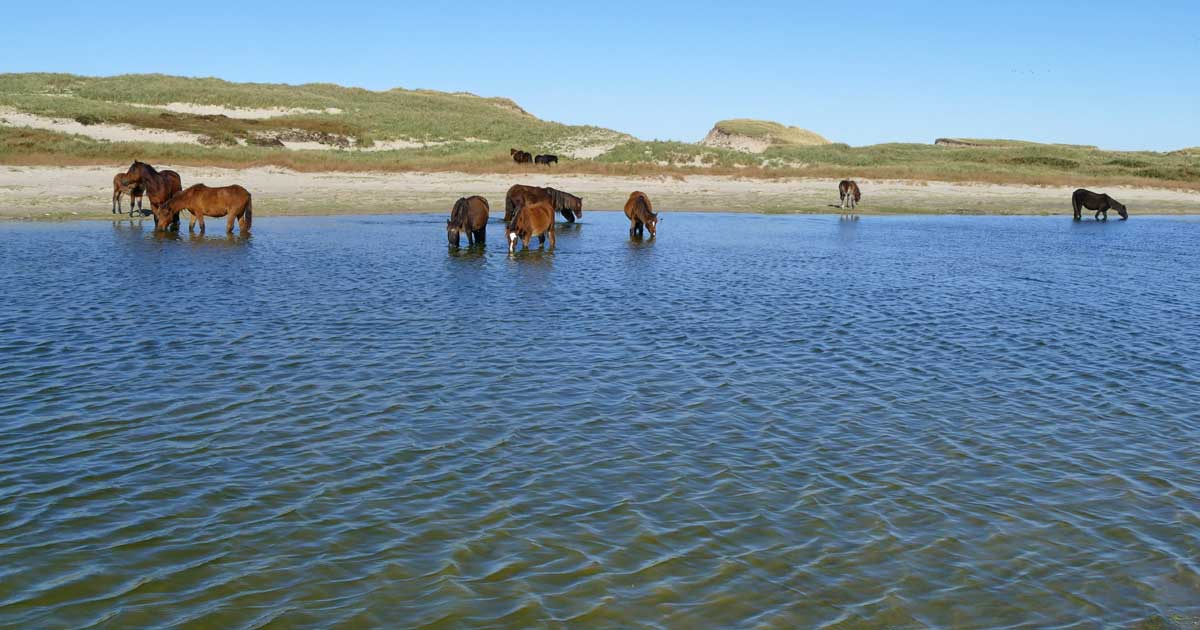 There are ten individuals in this large family band of Sable Island horses: the stallion (three white socks), and mares and young horses including two foals born in early summer. They are walking east on north beach, heading to Mummichog Pond to drink. After a stroll of about 2 km, the band arrives at the north side of the pond. They spend only five minutes drinking before wandering off to graze on a nearby dune slope. The water in most of Mummichog is only knee-deep.
There are ten individuals in this large family band of Sable Island horses: the stallion (three white socks), and mares and young horses including two foals born in early summer. They are walking east on north beach, heading to Mummichog Pond to drink. After a stroll of about 2 km, the band arrives at the north side of the pond. They spend only five minutes drinking before wandering off to graze on a nearby dune slope. The water in most of Mummichog is only knee-deep.
Posted on Facebook, October 15, 2020
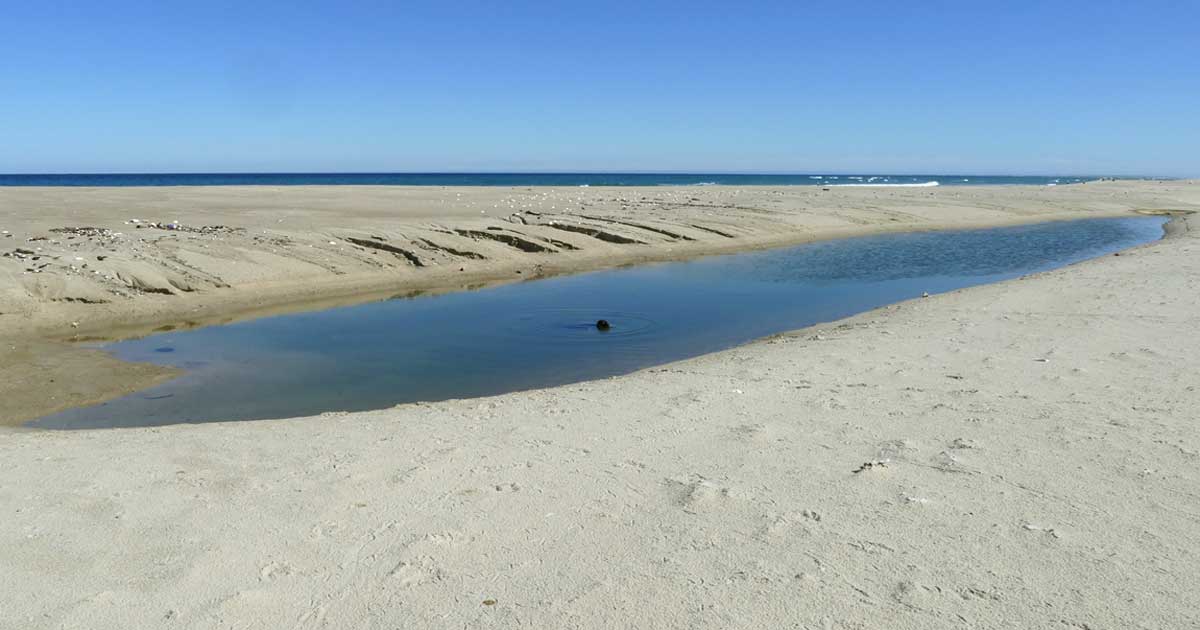
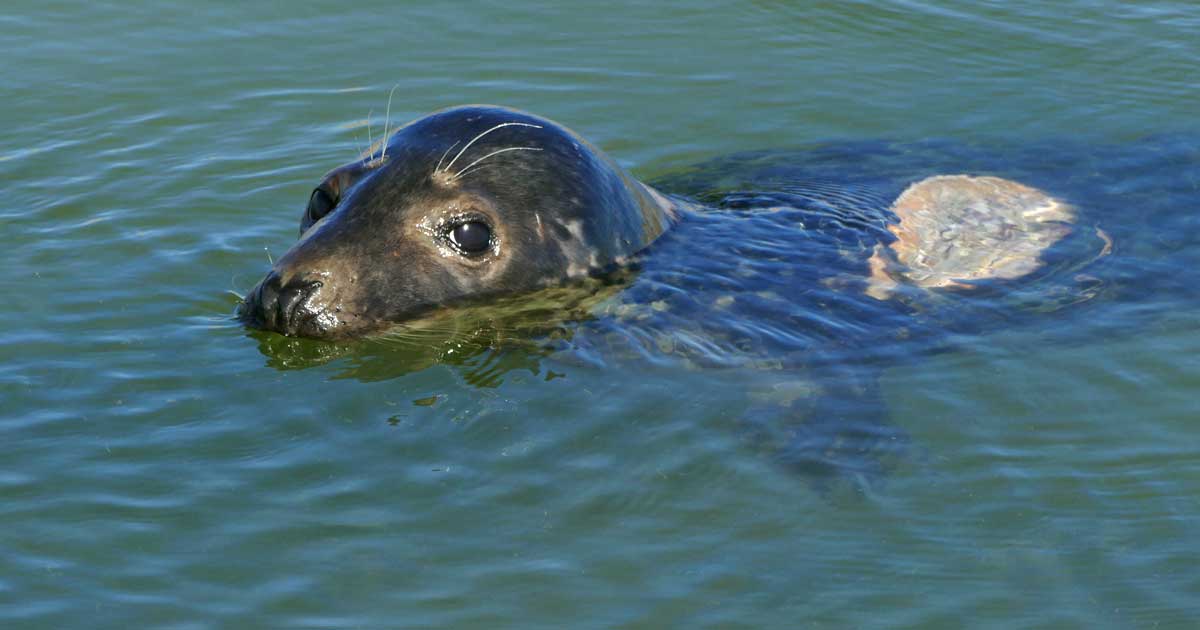 On the west end of Sable Island, temporary pools of seawater are formed by waves, currents and moving sand. A young Grey Seal – born last winter – was alone in one of these pools, swimming, diving, floating and resting. The seal might have been there to enjoy the slightly warmer water, or perhaps the seal was avoiding the open ocean because of a close call with a predator. The light-coloured patch on the seal’s back is a shark bite. It wasn’t a deep wound, just into the blubber layer, and it wasn’t bleeding. But the encounter would have been alarming as well as painful. The quiet pool was a safe and calm place to relax.
On the west end of Sable Island, temporary pools of seawater are formed by waves, currents and moving sand. A young Grey Seal – born last winter – was alone in one of these pools, swimming, diving, floating and resting. The seal might have been there to enjoy the slightly warmer water, or perhaps the seal was avoiding the open ocean because of a close call with a predator. The light-coloured patch on the seal’s back is a shark bite. It wasn’t a deep wound, just into the blubber layer, and it wasn’t bleeding. But the encounter would have been alarming as well as painful. The quiet pool was a safe and calm place to relax.
Posted on Facebook, October 14, 2020
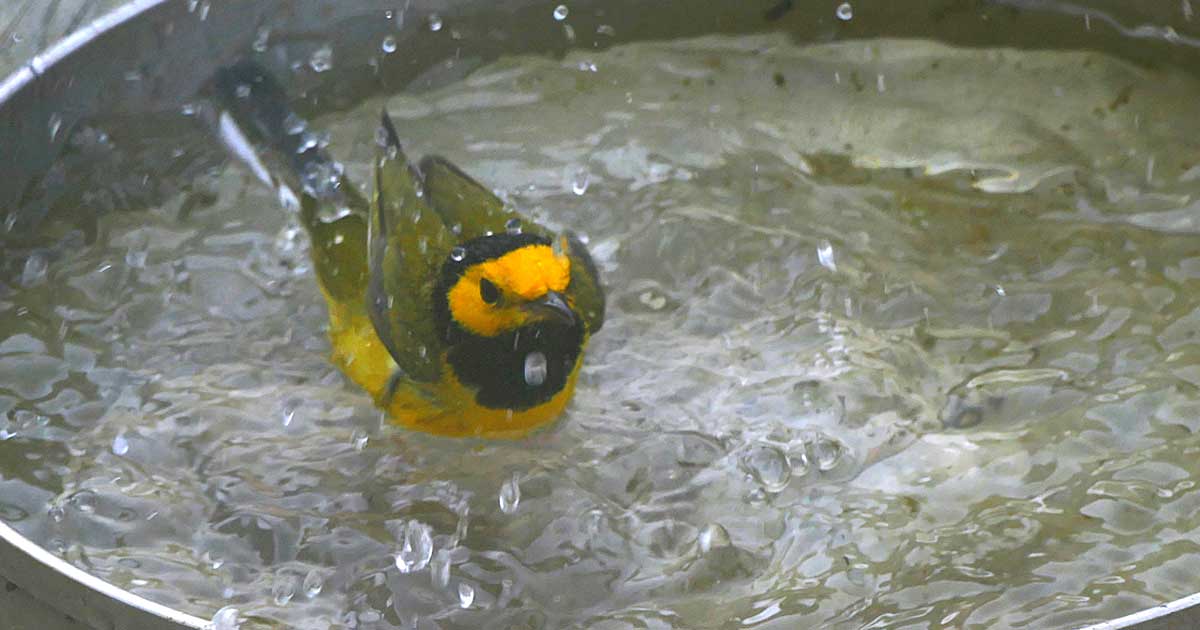
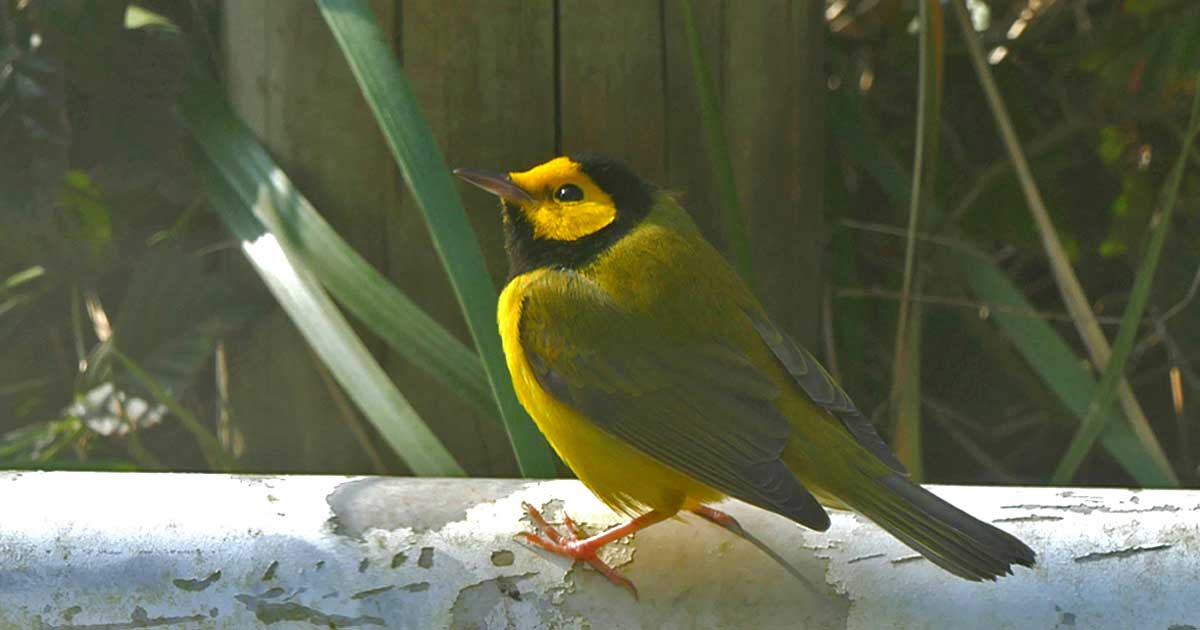 A wet day on Sable Island with a southeasterly wind blowing up to 27 knots (50 km/h) and rain occasionally heavy (16 mm so far). Although it’s raining, small birds have turned up to splash about in a pan of freshwater. In addition to this Hooded Warbler, visitors to the bird spa included other warblers – Cape May, Black-and-White, Yellow-rumped, Yellow-throated, and Palm – and a Pine Siskin. An earlier photo of the Hooded Warbler shows him yesterday in a less soggy pose.
A wet day on Sable Island with a southeasterly wind blowing up to 27 knots (50 km/h) and rain occasionally heavy (16 mm so far). Although it’s raining, small birds have turned up to splash about in a pan of freshwater. In addition to this Hooded Warbler, visitors to the bird spa included other warblers – Cape May, Black-and-White, Yellow-rumped, Yellow-throated, and Palm – and a Pine Siskin. An earlier photo of the Hooded Warbler shows him yesterday in a less soggy pose.
Posted on Facebook, October 13, 2020
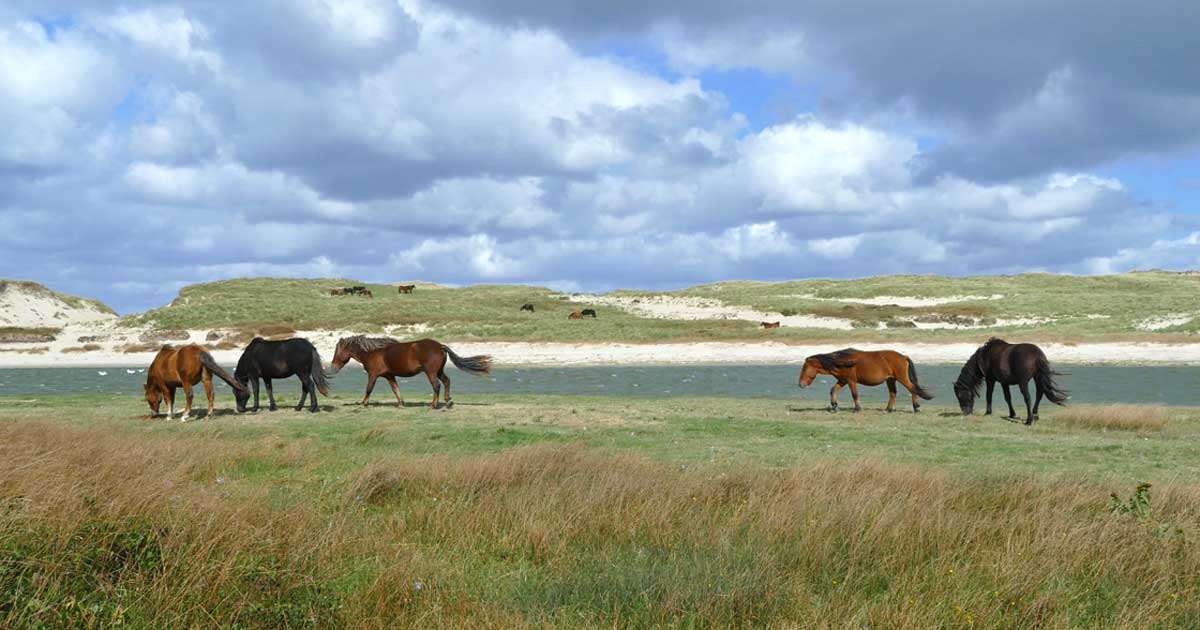
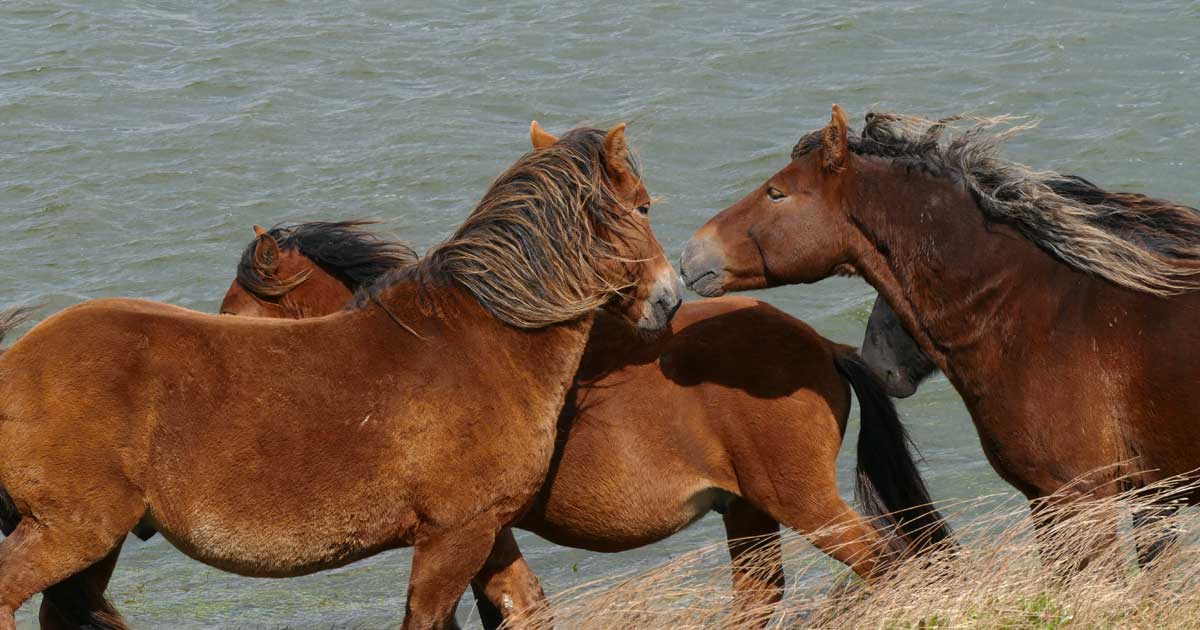 During autumn, with bands coming in to drink at Mummichog Pond and others grazing on nearby dune slopes, the area can be busy with horse activity. The number of horses varies throughout the day – sometimes only a few horses in sight, sometimes more than fifty. Here, a group of four males arrive for a drink and stay to socialize with a band stallion (at the left in both photos). The stallion had left his band at the far end of the pond and trotted over to meet and engage with the four males.
During autumn, with bands coming in to drink at Mummichog Pond and others grazing on nearby dune slopes, the area can be busy with horse activity. The number of horses varies throughout the day – sometimes only a few horses in sight, sometimes more than fifty. Here, a group of four males arrive for a drink and stay to socialize with a band stallion (at the left in both photos). The stallion had left his band at the far end of the pond and trotted over to meet and engage with the four males.
Posted on Facebook, October 12, 2020
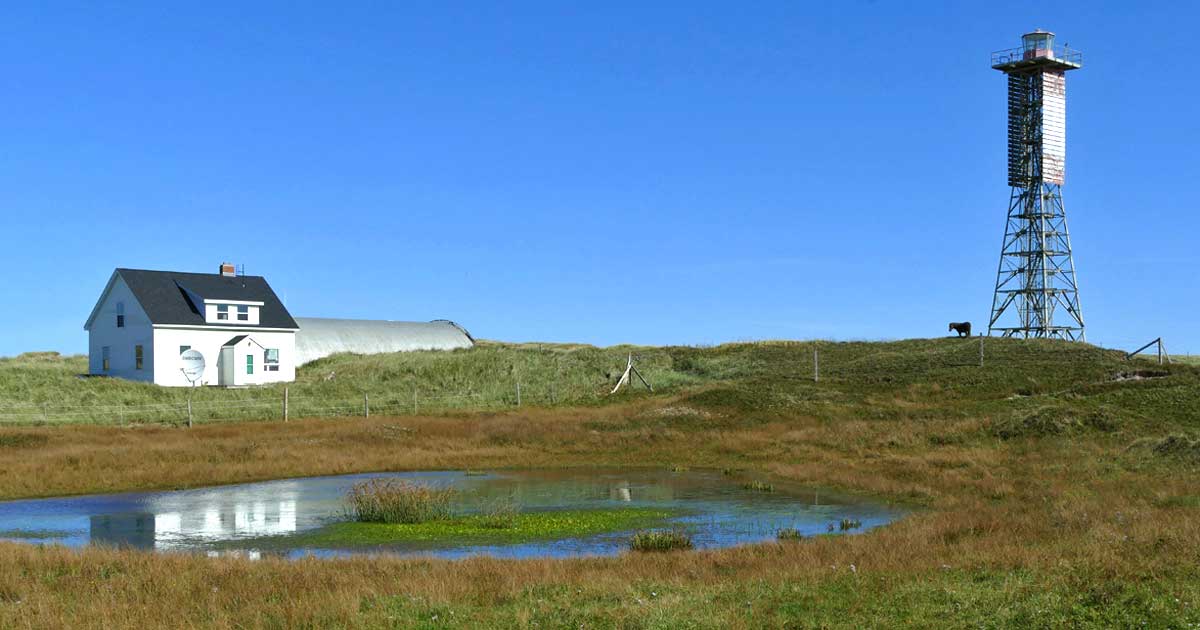
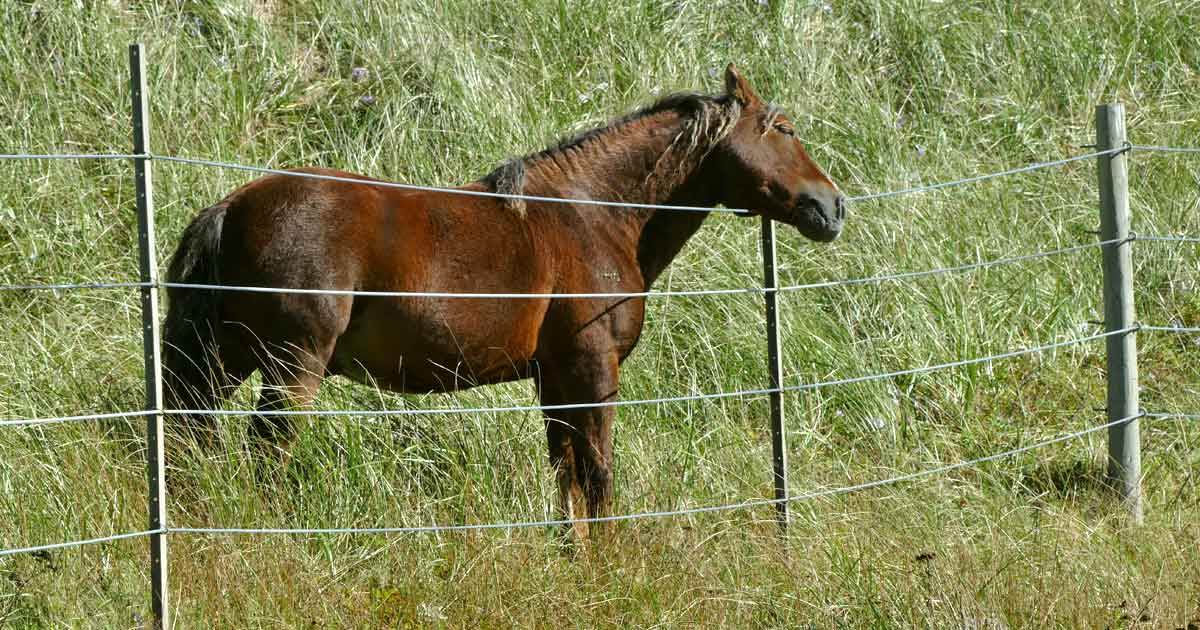 On Sable Island, most human infrastructure is surrounded by fencing. This is to prevent negative impacts on both horses and structures that can occur when horses investigate and forage near buildings, or rub on guy lines or equipment. At the West Light location, the light tower (decommissioned in 2004), the seal research team’s field house and several smaller buildings are enclosed within a fence of plastic-covered cable. One horse has discovered a section where the cable is slack (soon to be tightened) and he enters the exclosure to graze for an hour or so. Just inside the fence, he scratches on a post.
On Sable Island, most human infrastructure is surrounded by fencing. This is to prevent negative impacts on both horses and structures that can occur when horses investigate and forage near buildings, or rub on guy lines or equipment. At the West Light location, the light tower (decommissioned in 2004), the seal research team’s field house and several smaller buildings are enclosed within a fence of plastic-covered cable. One horse has discovered a section where the cable is slack (soon to be tightened) and he enters the exclosure to graze for an hour or so. Just inside the fence, he scratches on a post.
Posted on Facebook, October 11, 2020
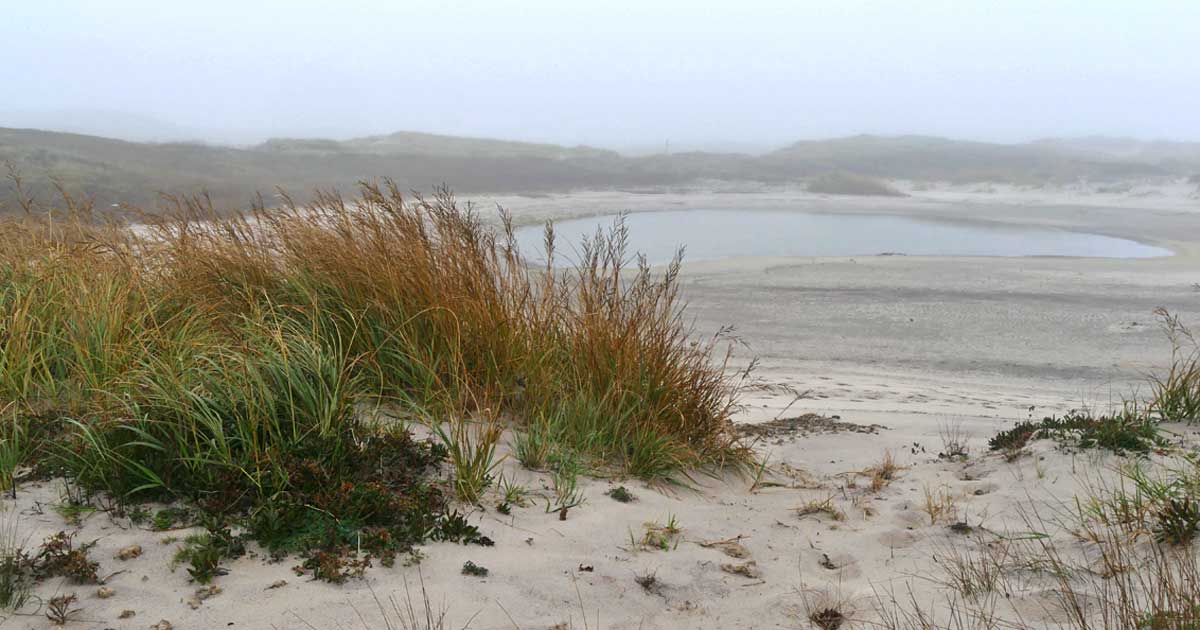
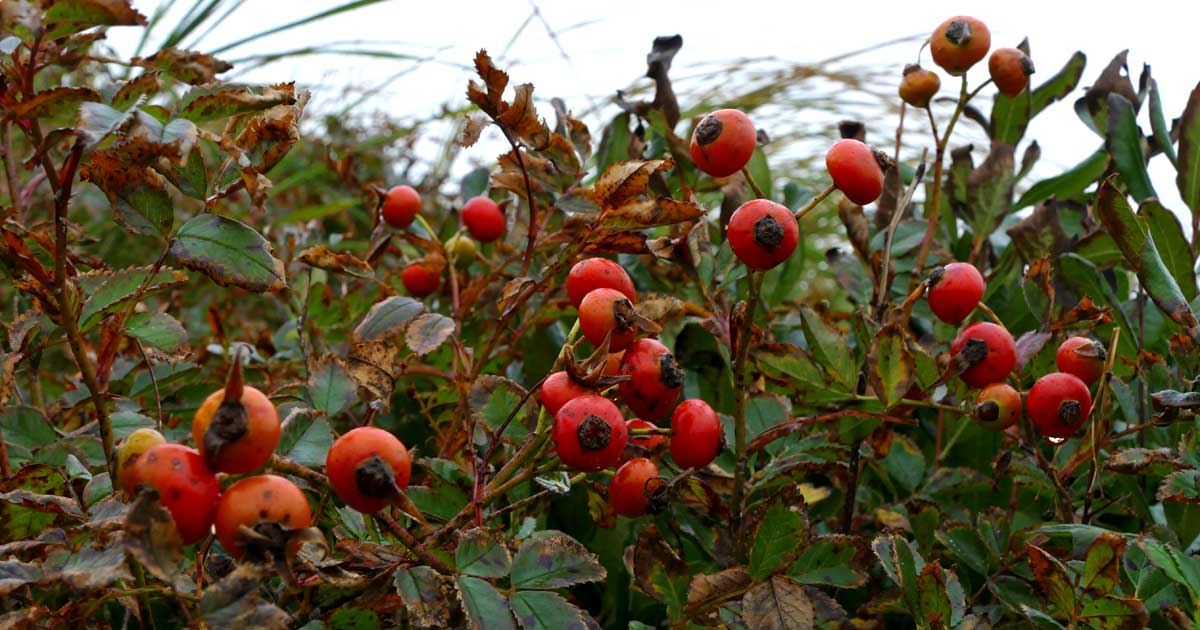 Cordgrass and marram at what’s left of Lily Pond North, and wild rose nearby, briefly in fog, as the wind dropped to about 10 knots after three days of high winds peaking at 42 knots (78 km/h). In a couple of hours, the breeze picked up again, but only to 20 knots, and the fog was gone. The rosehips are eaten by autumn birds, especially finches and waxwings, and by the Sable Island horses. The birds and horses then disperse the rose seeds in their droppings and manure.
Cordgrass and marram at what’s left of Lily Pond North, and wild rose nearby, briefly in fog, as the wind dropped to about 10 knots after three days of high winds peaking at 42 knots (78 km/h). In a couple of hours, the breeze picked up again, but only to 20 knots, and the fog was gone. The rosehips are eaten by autumn birds, especially finches and waxwings, and by the Sable Island horses. The birds and horses then disperse the rose seeds in their droppings and manure.
Posted on Facebook, October 10, 2020
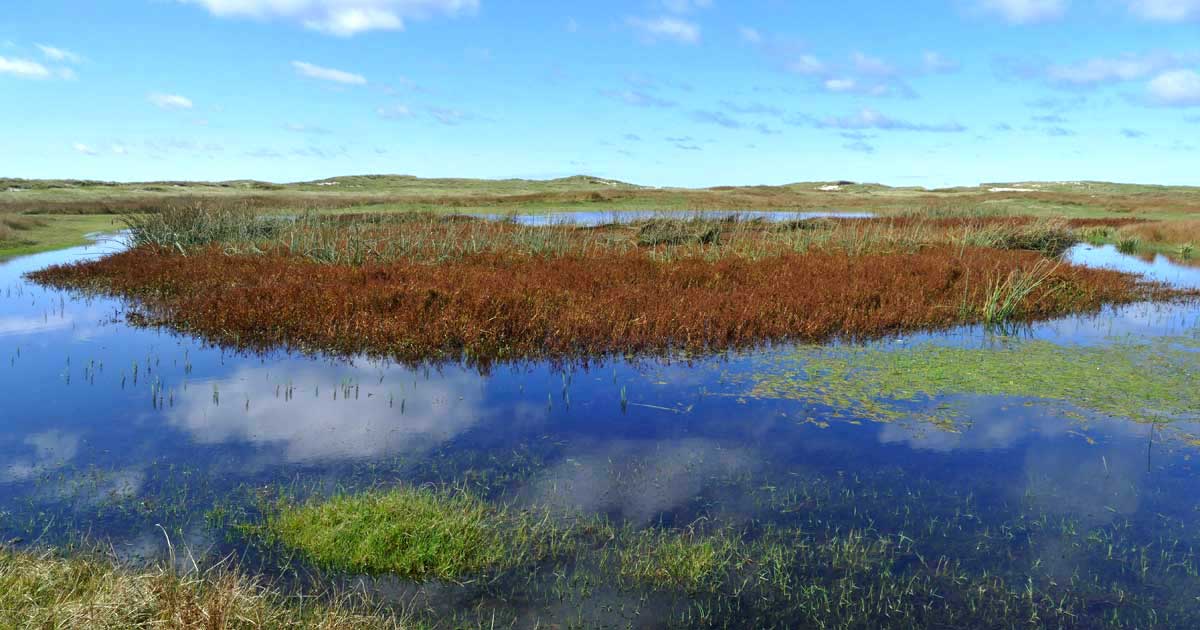
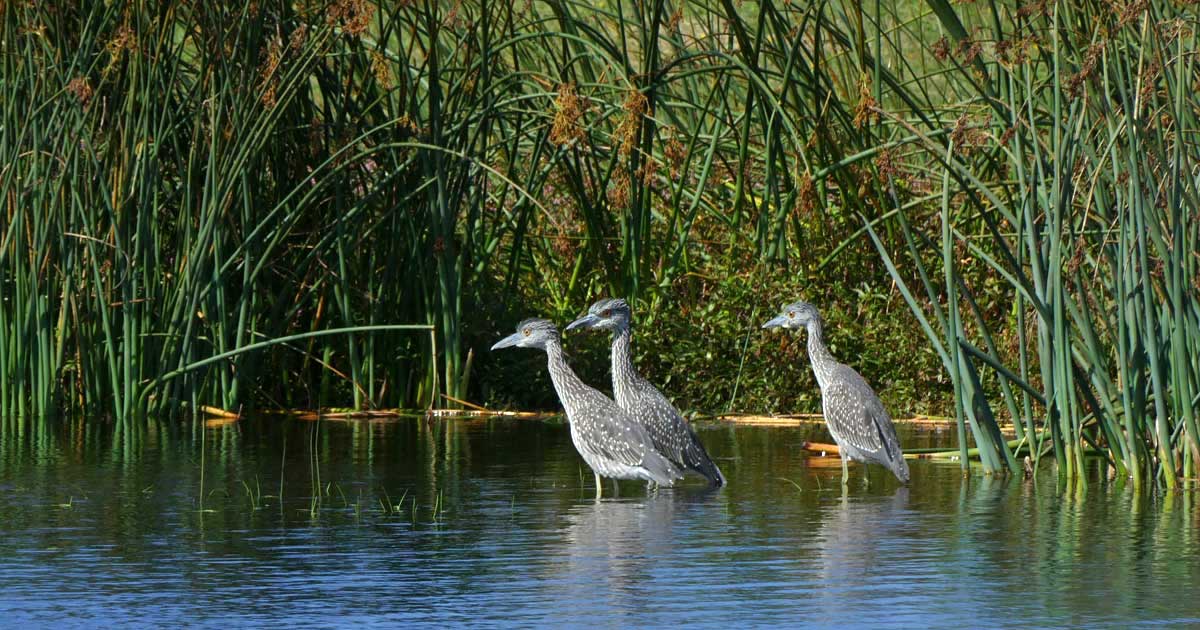 Fall colours at a freshwater pond on Sable Island. The foliage of the pond vegetation will eventually be torn and flattened by October and November winds, but in the meantime the dense tangle and what’s left of the tall green rushes provide a rich foraging area for birds such as warblers, vireos and kinglets that turn up on the island during autumn. A few weeks ago, the rushes served as a windbreak for three juvenile Yellow-crowned Night-herons standing together in the glow of mid-day sunshine.
Fall colours at a freshwater pond on Sable Island. The foliage of the pond vegetation will eventually be torn and flattened by October and November winds, but in the meantime the dense tangle and what’s left of the tall green rushes provide a rich foraging area for birds such as warblers, vireos and kinglets that turn up on the island during autumn. A few weeks ago, the rushes served as a windbreak for three juvenile Yellow-crowned Night-herons standing together in the glow of mid-day sunshine.
Posted on Facebook, October 9, 2020
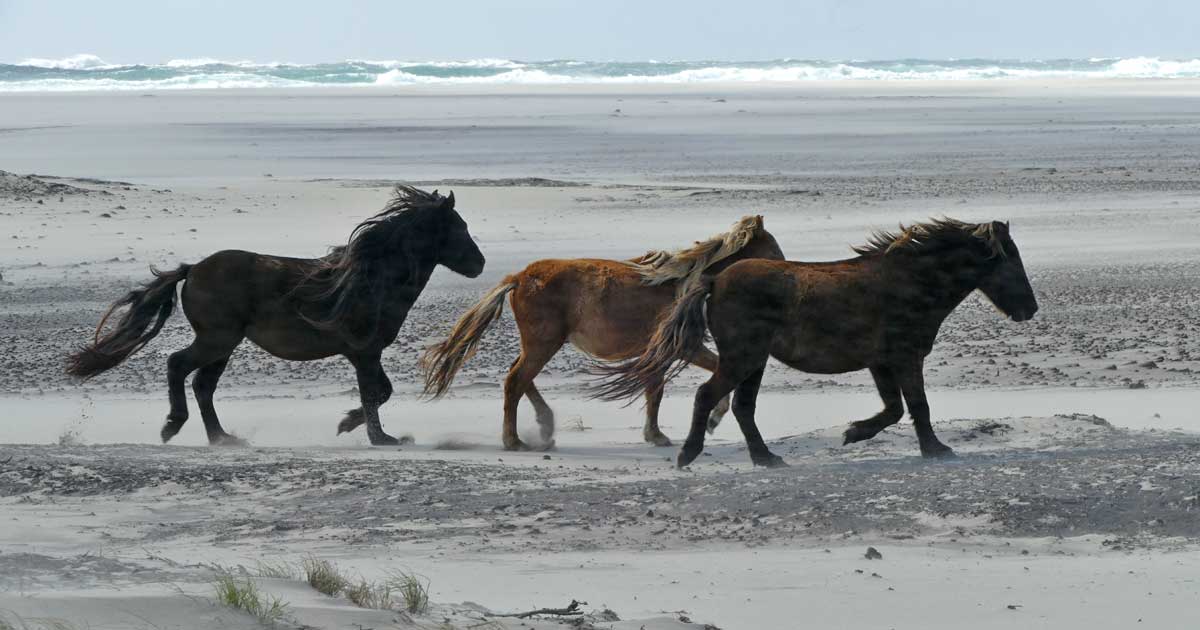
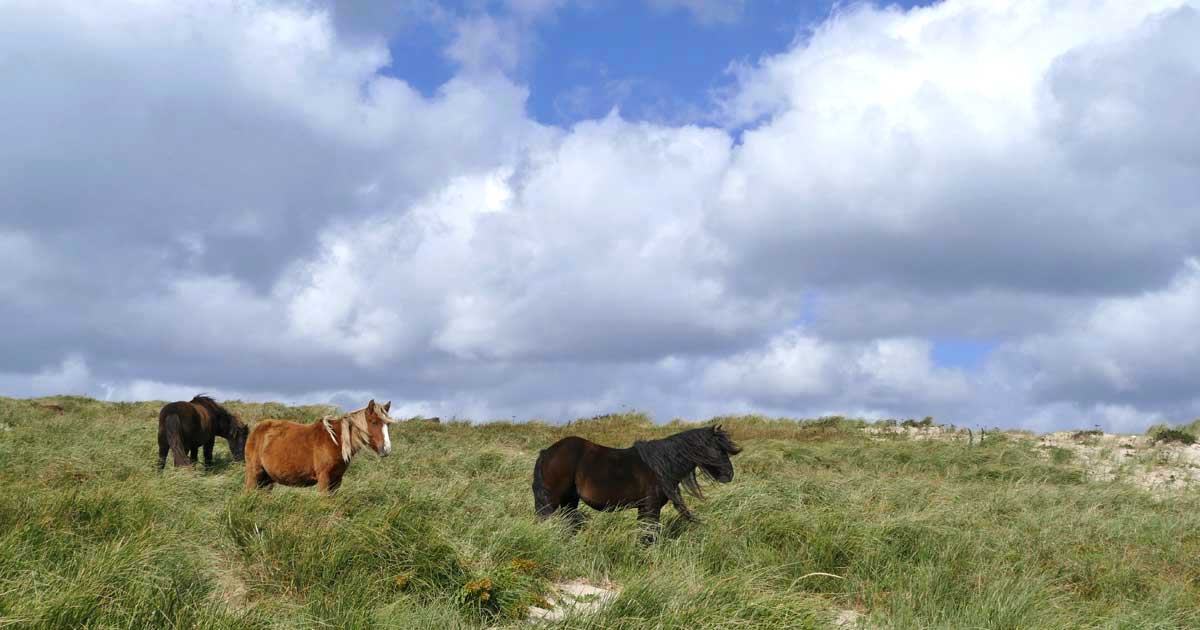 A cool, fall day on Sable Island with a maximum temperature of 10.6°C and northwesterly winds peaking at 36 knots (67 km/h). Facing into the blowing sand, a family band trots across a windswept south beach sand flat towards a relatively sheltered inland area. On the gentle leeward slope of a north beach dune, the wind is still howling, but there is far less sand blowing about. In the tall, thick marram grass, the horses can rest and graze in the warmth of patches of sunlight that flow over the landscape.
A cool, fall day on Sable Island with a maximum temperature of 10.6°C and northwesterly winds peaking at 36 knots (67 km/h). Facing into the blowing sand, a family band trots across a windswept south beach sand flat towards a relatively sheltered inland area. On the gentle leeward slope of a north beach dune, the wind is still howling, but there is far less sand blowing about. In the tall, thick marram grass, the horses can rest and graze in the warmth of patches of sunlight that flow over the landscape.
Zoe Lucas, Sable Island Institute
October 9 – November 7, 2020
For Zoe’s other series of Facebook posts, see:
Series No.1, Posted on Facebook, June 8 – July 11, 2020
Series No.3, Posted on Facebook, November 8 – December 12, 2020
Series No.4, Posted on Facebook, October 26 – November 28, 2021

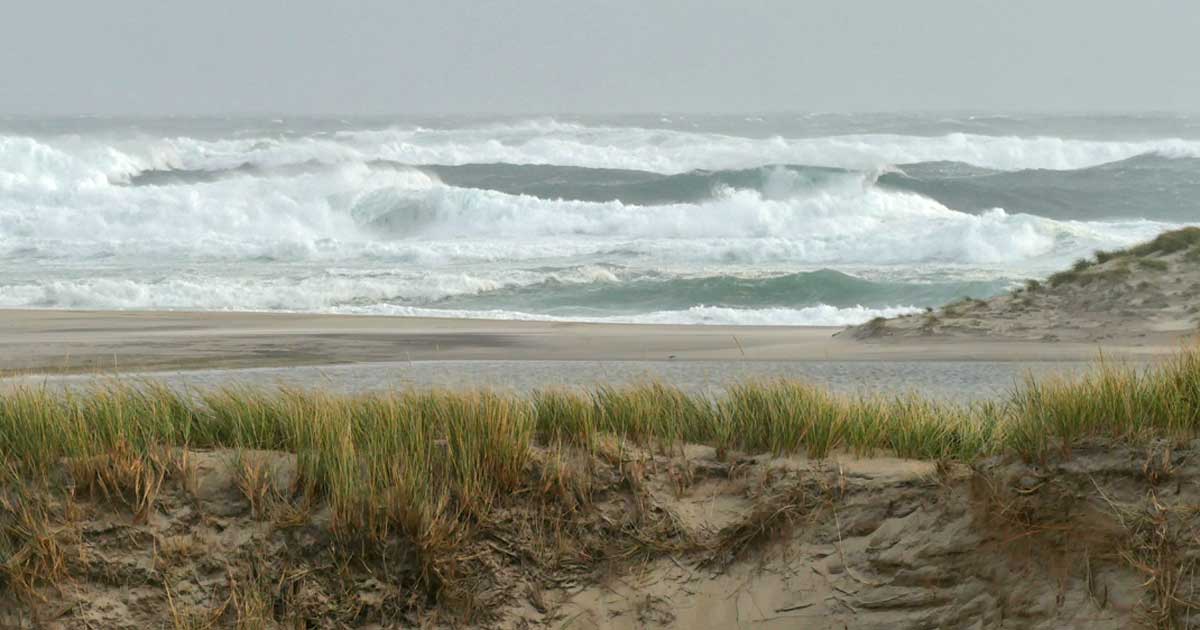
2 Responses
I just love seeing all these marvellous pictures! Thank you for posting them. I wonder what happens over time to the horse hoofs? Do the hoofs get overgrown? Or does walking through sand all day keep them trimmed?
Heather Grant
Zoe,
What fabulous photos and thank you for posting them via the Sable Island Institute as I do not do Facebook. Very informative notes as well. I have enjoyed your October sightings!
Grace Beazley